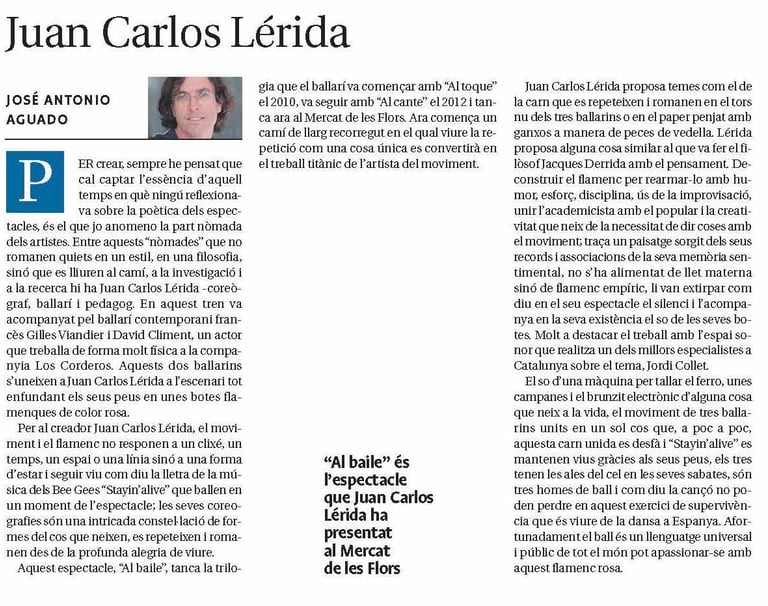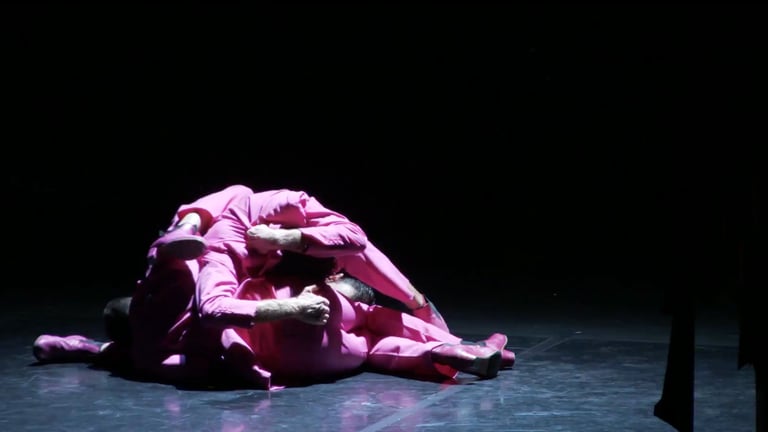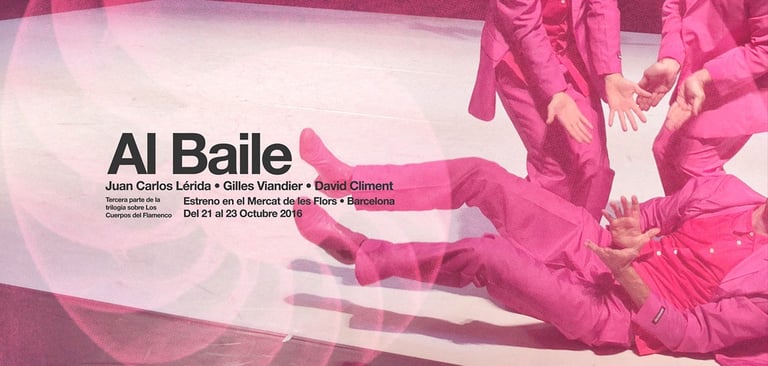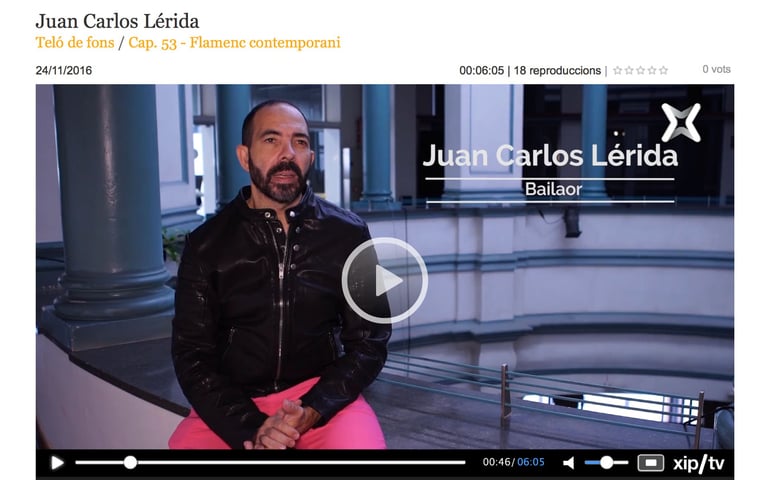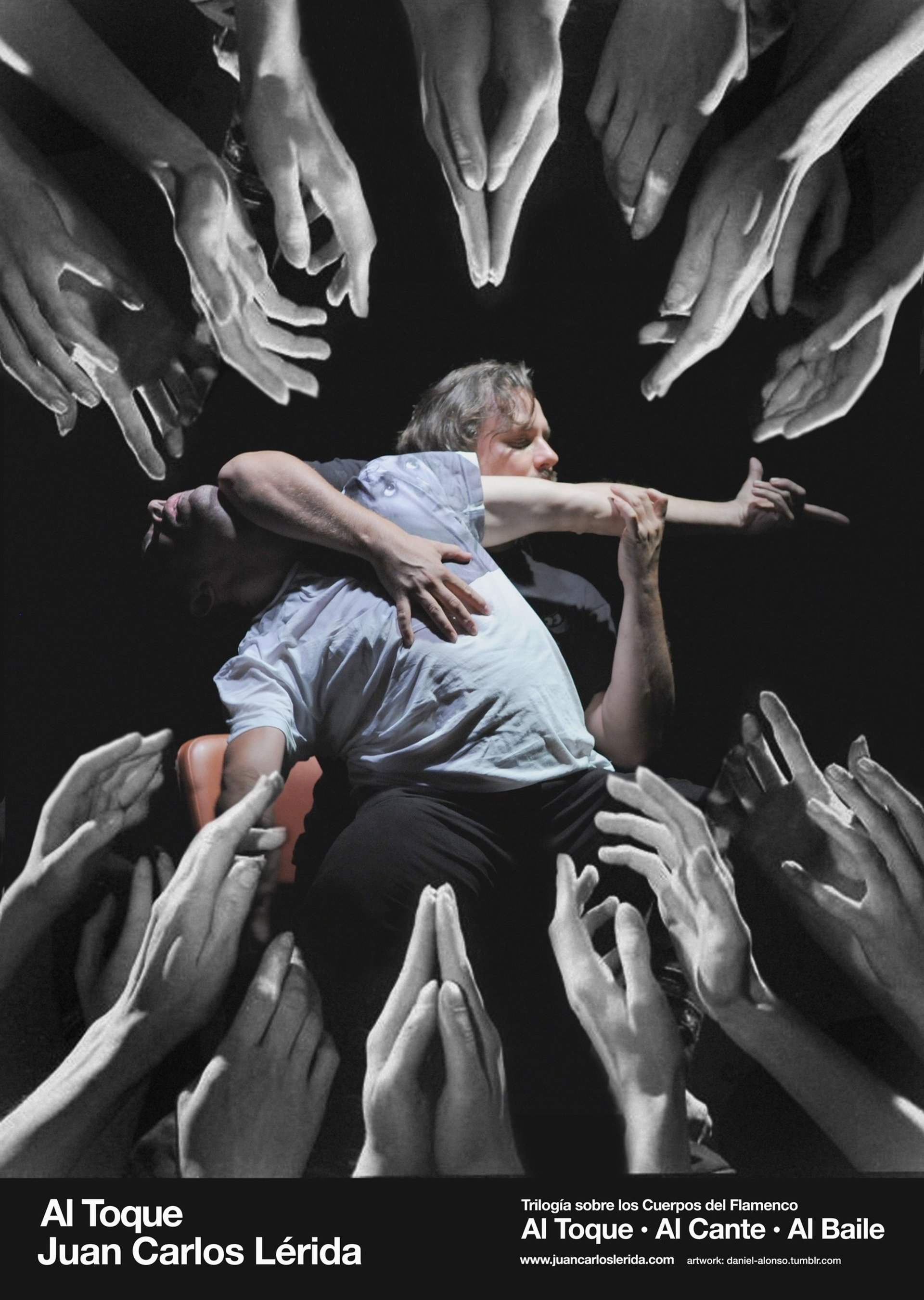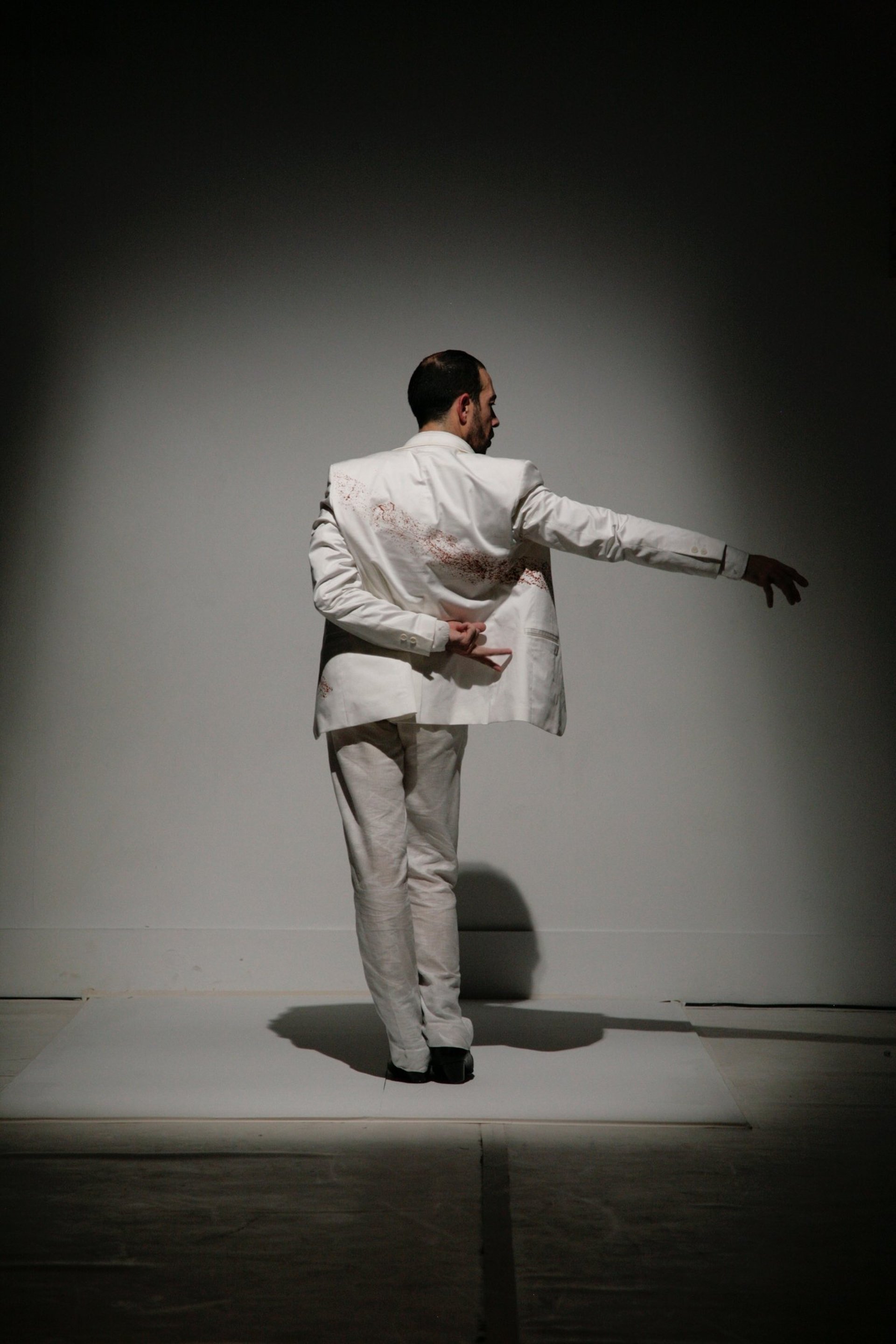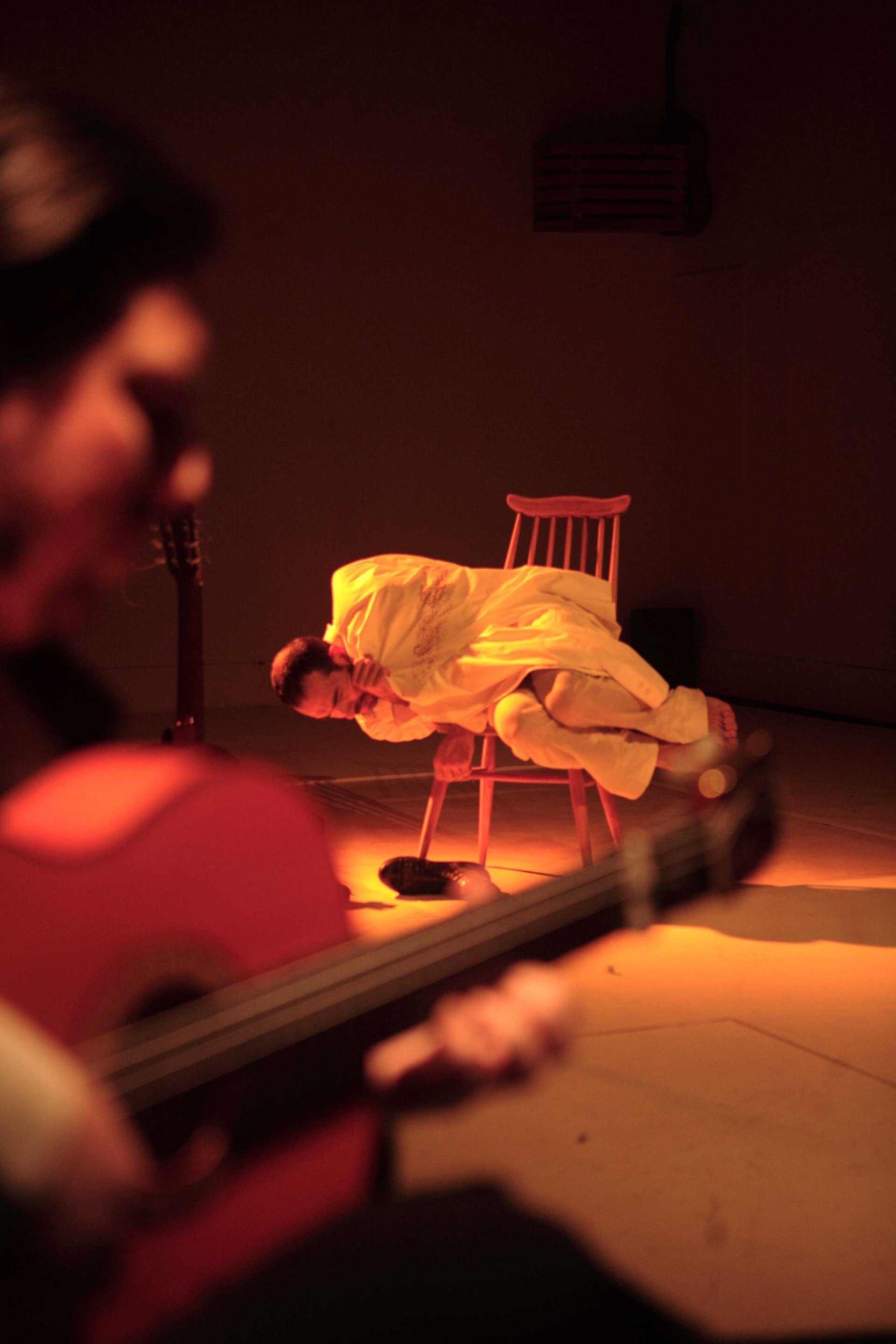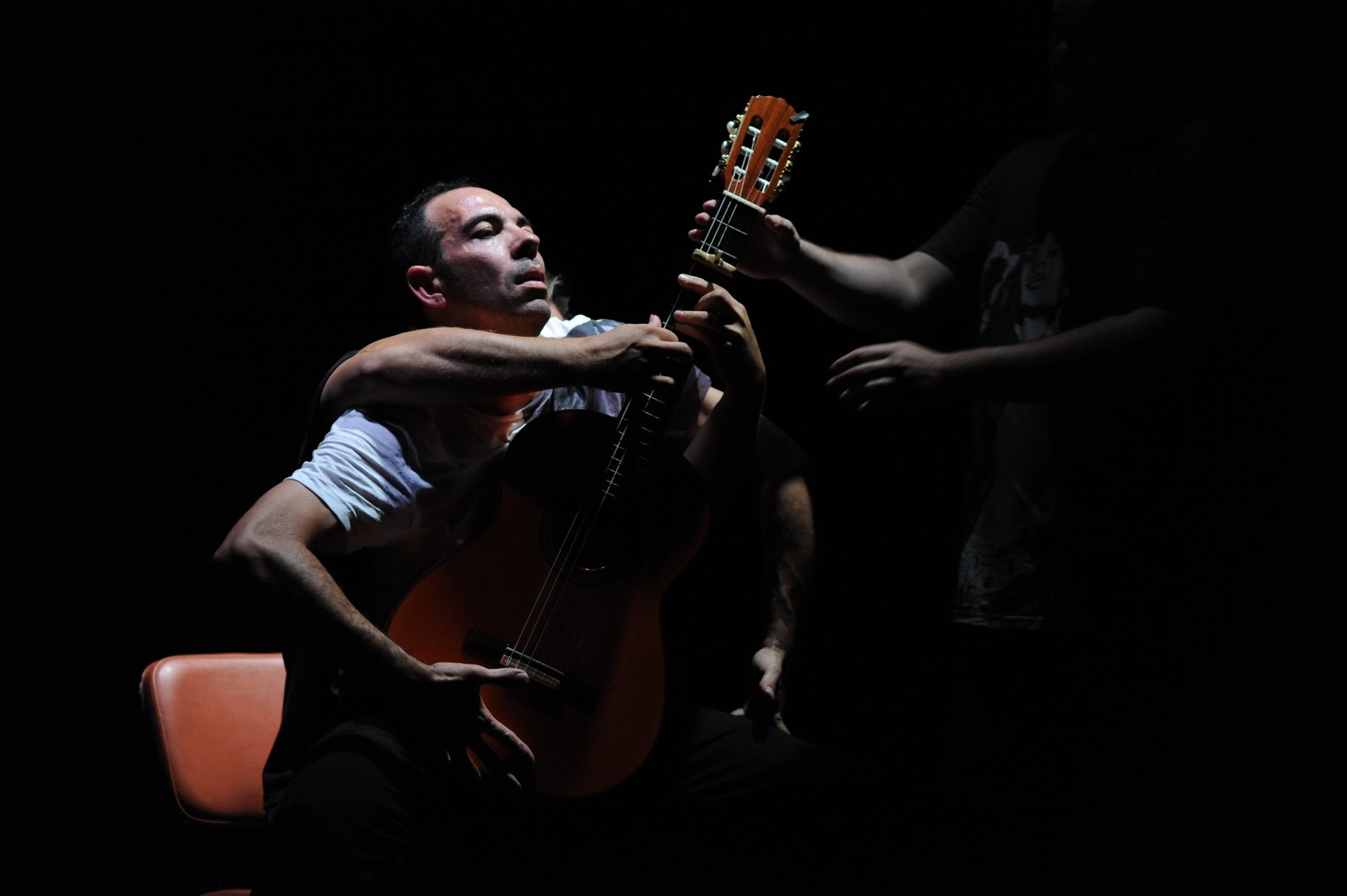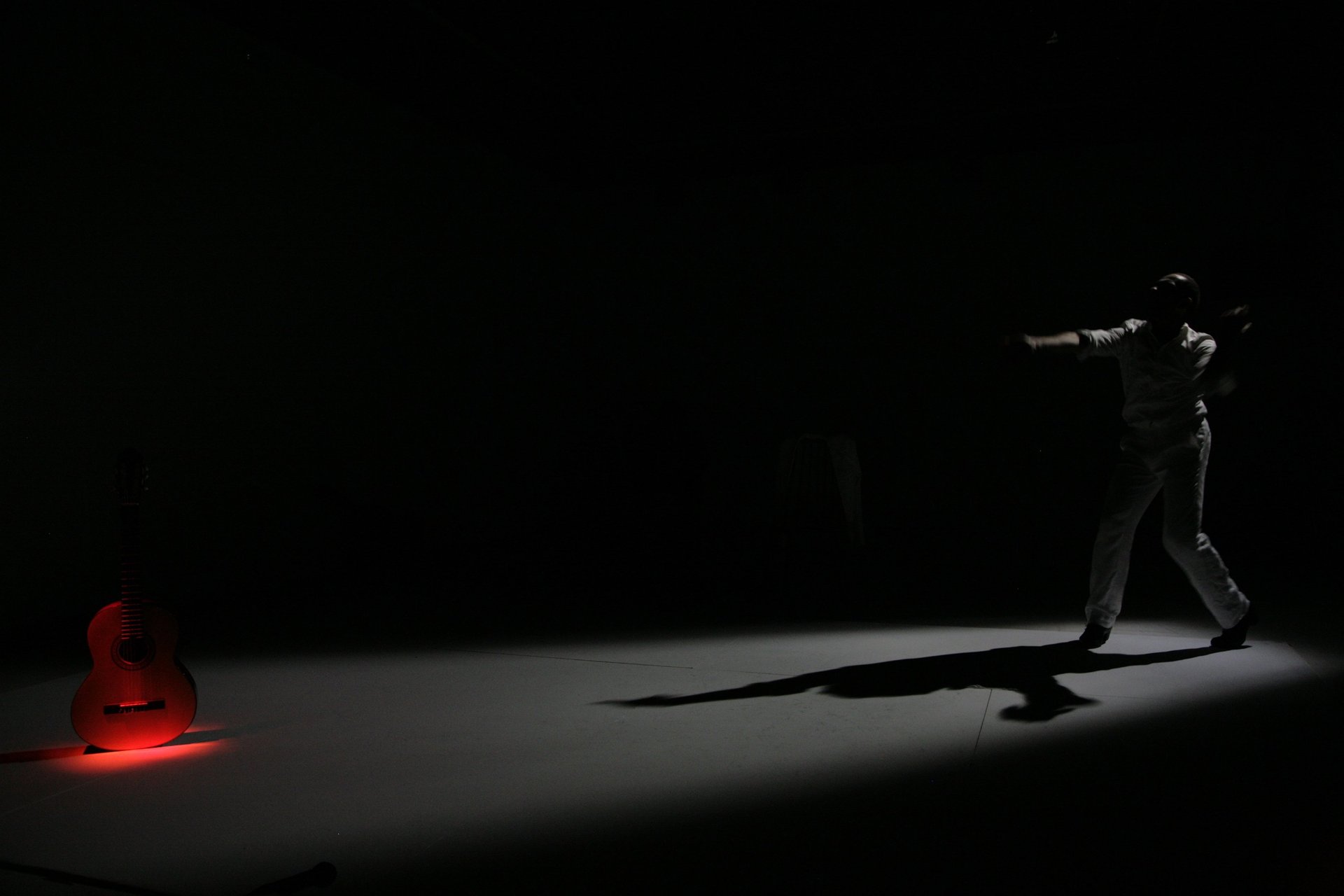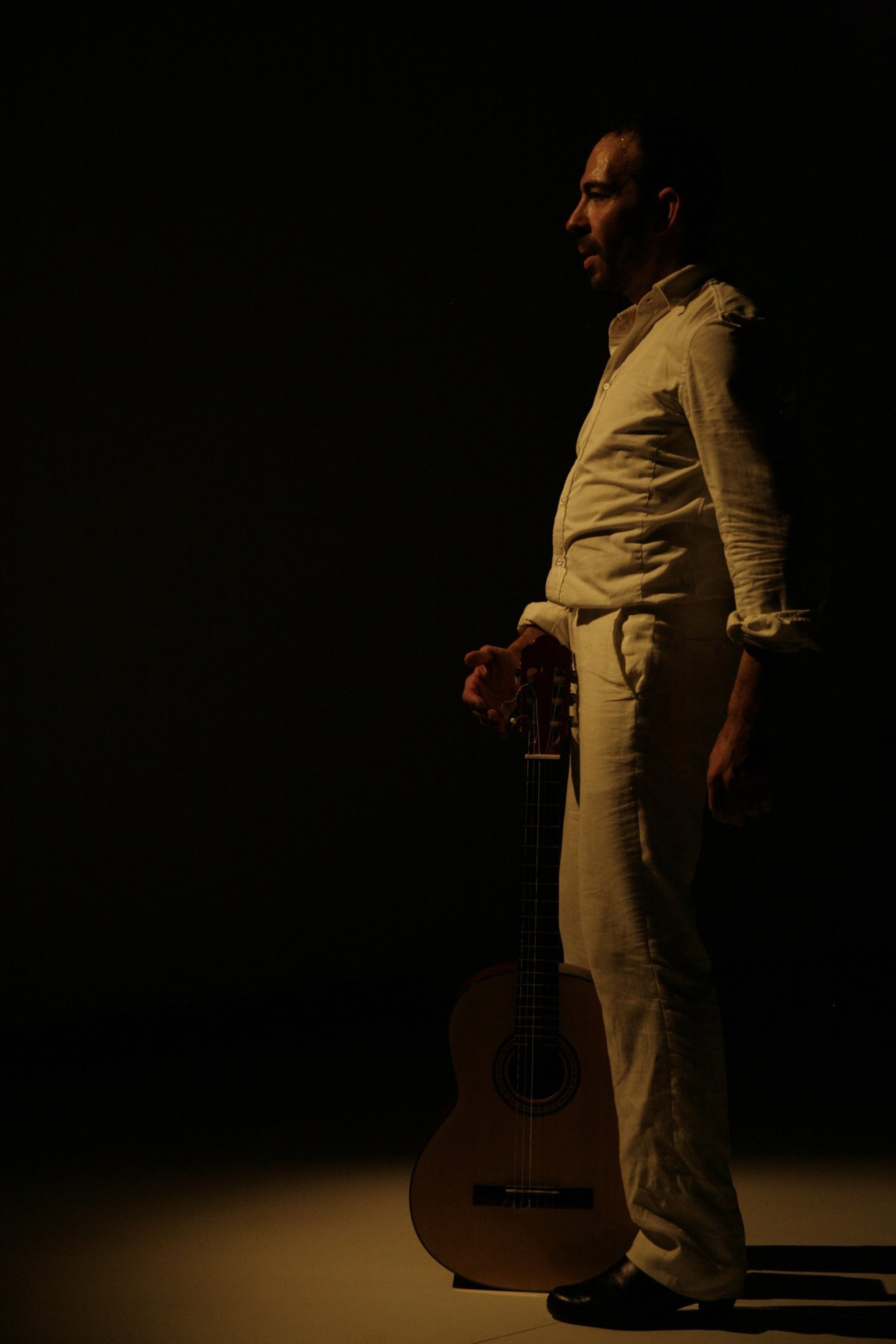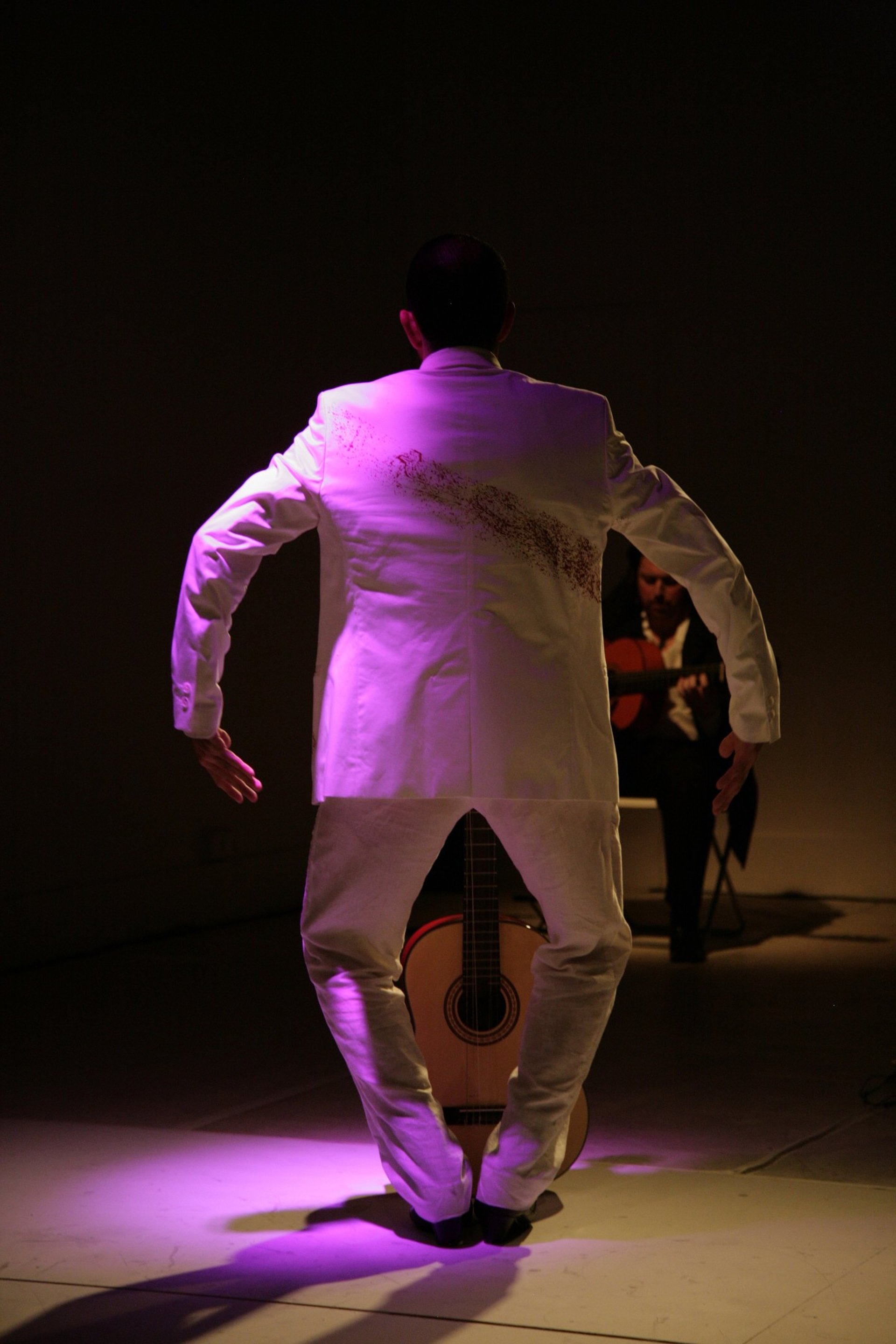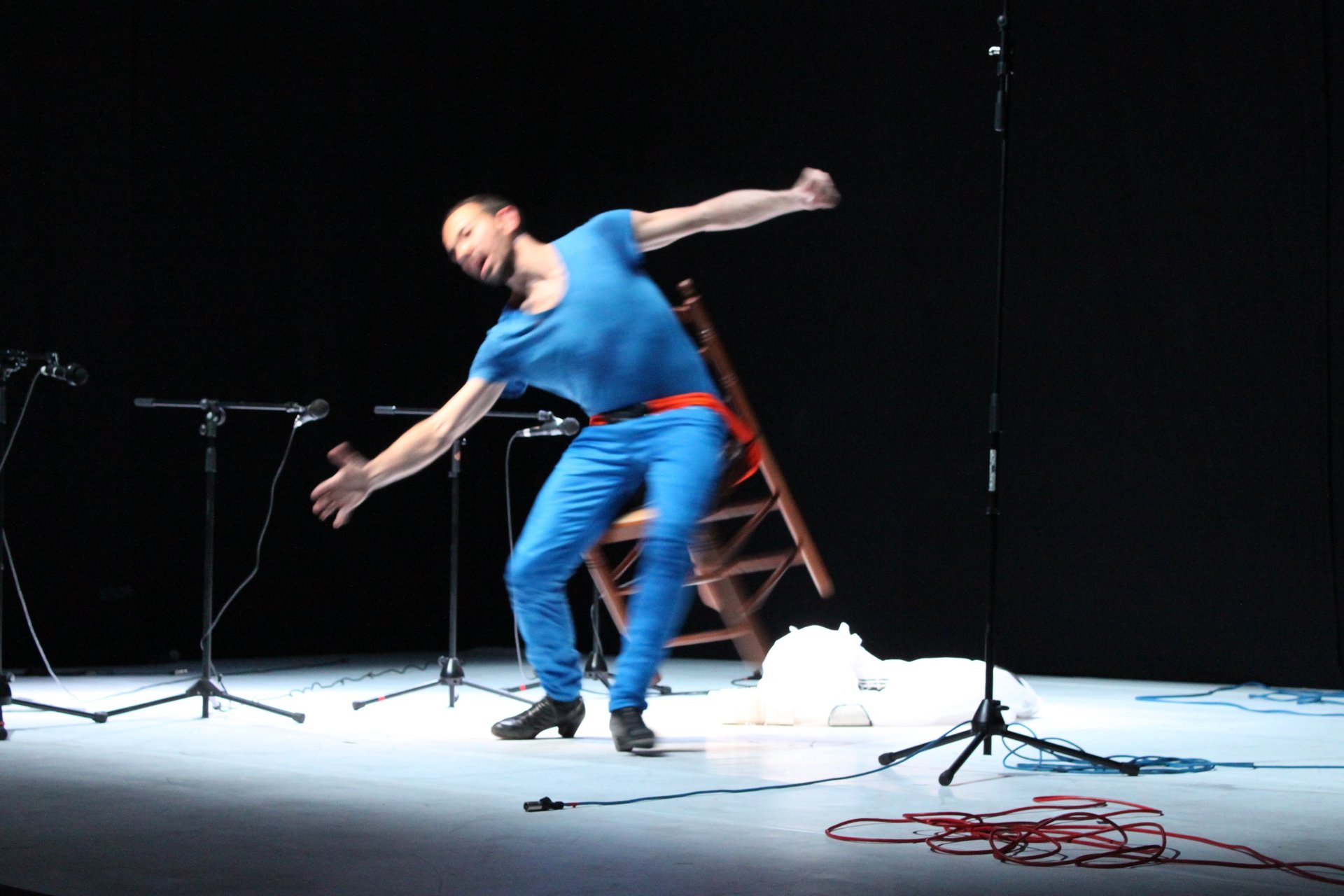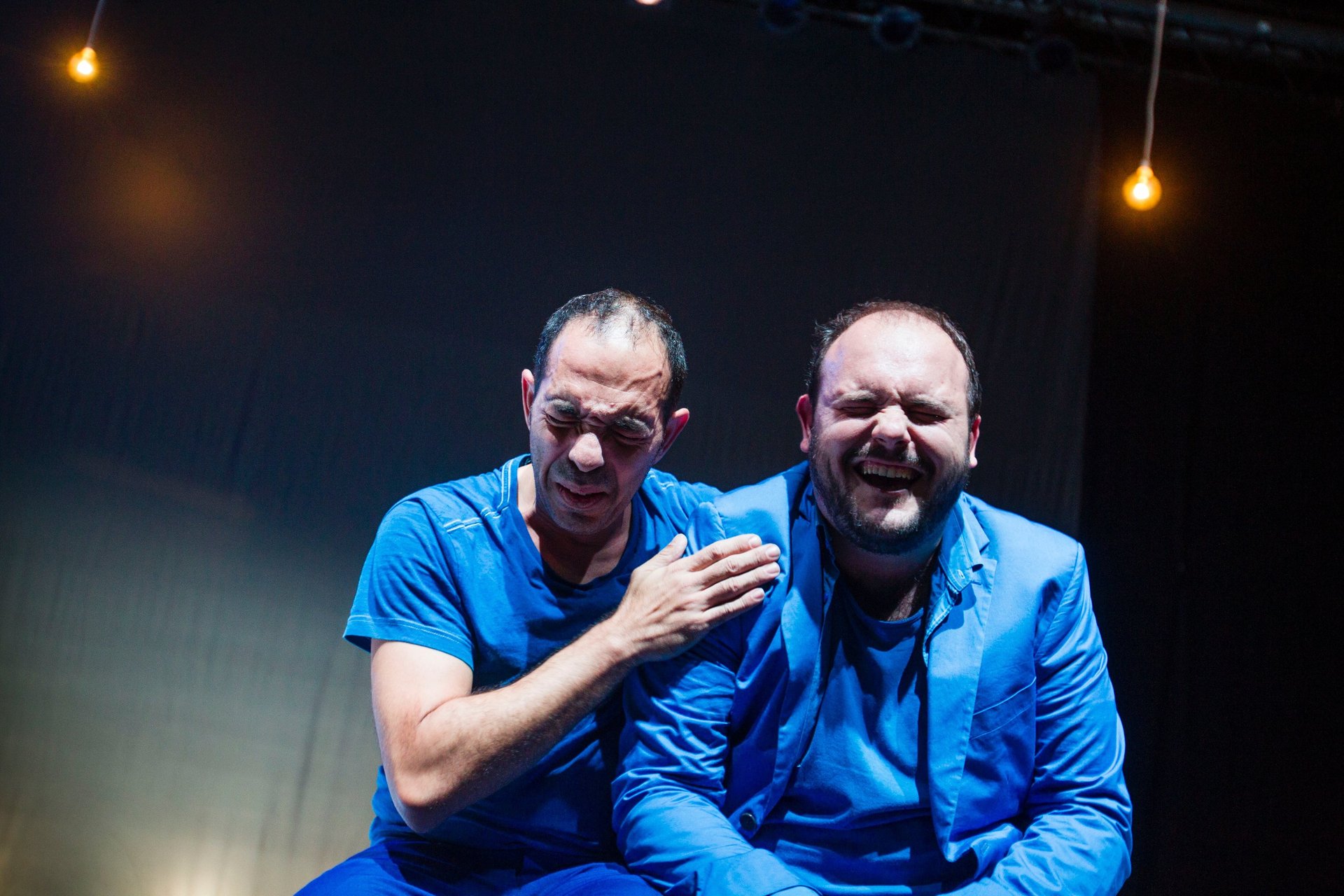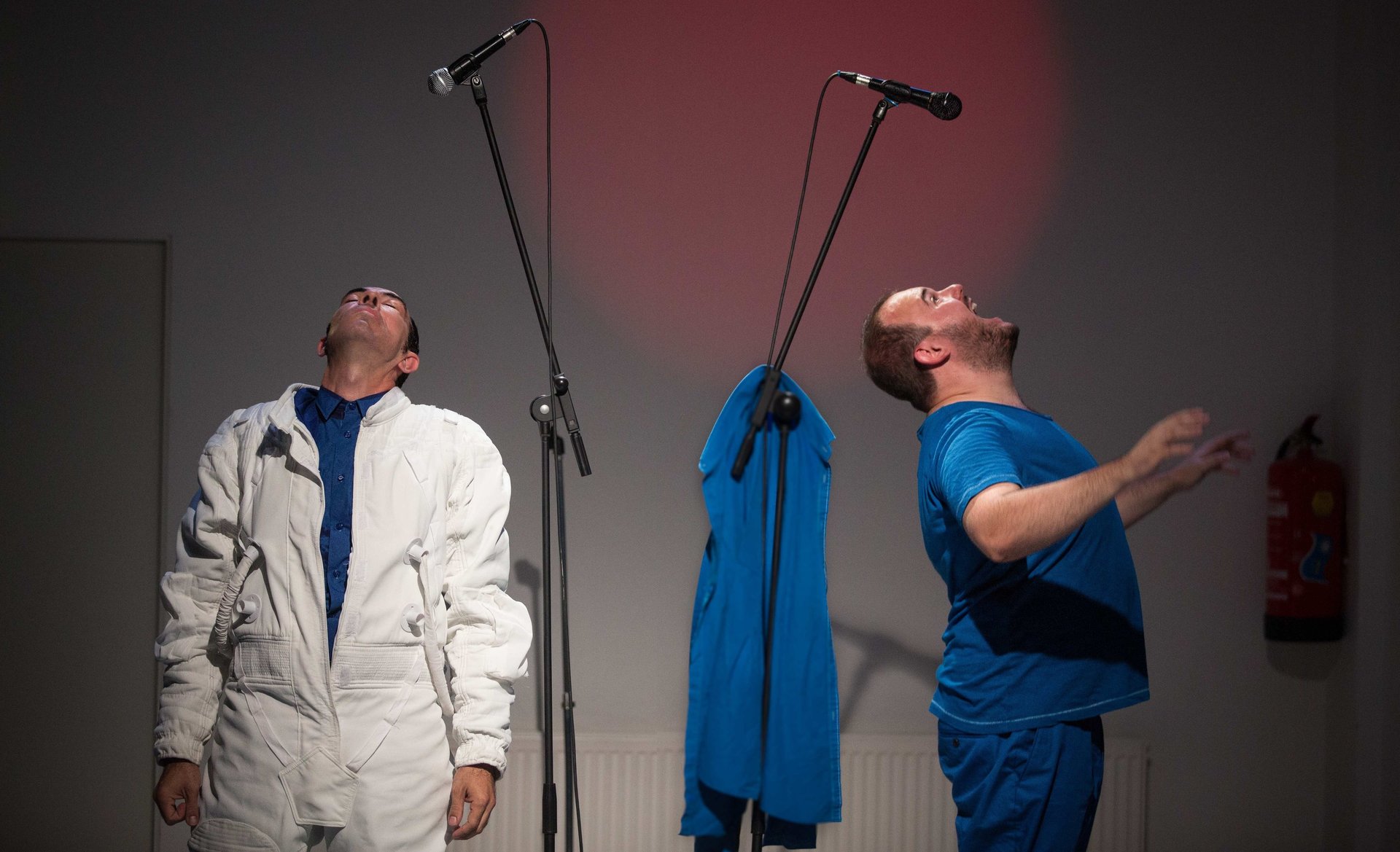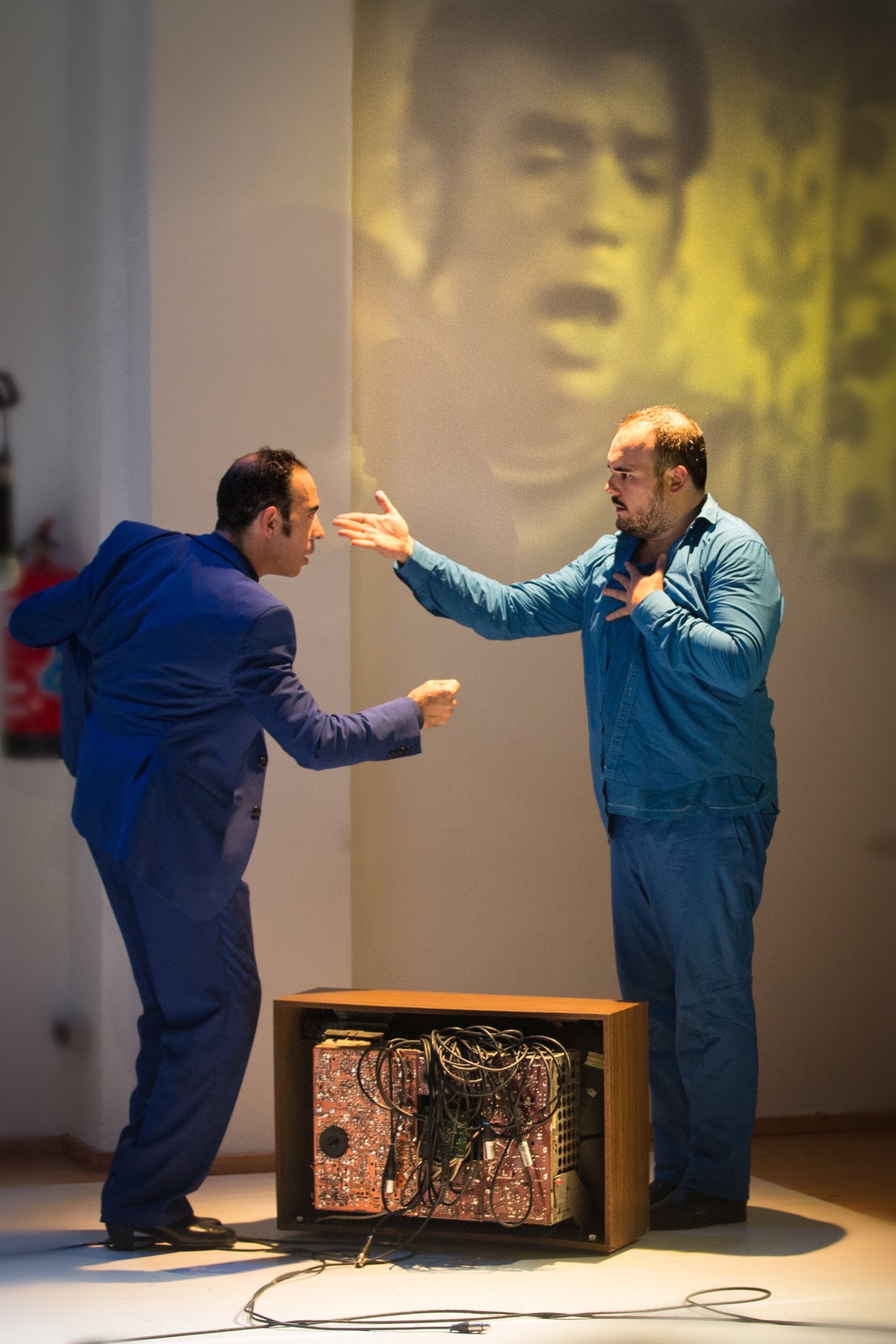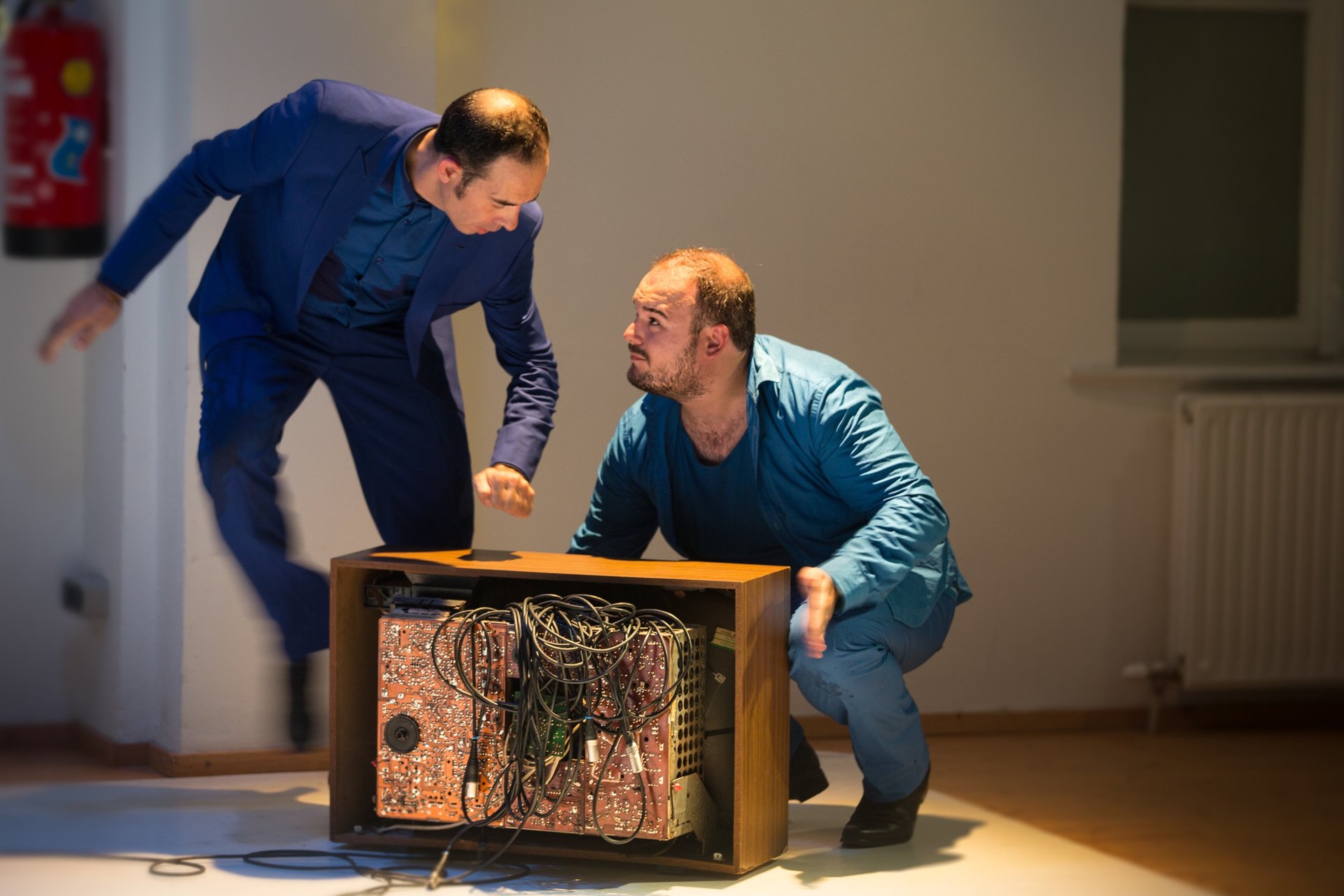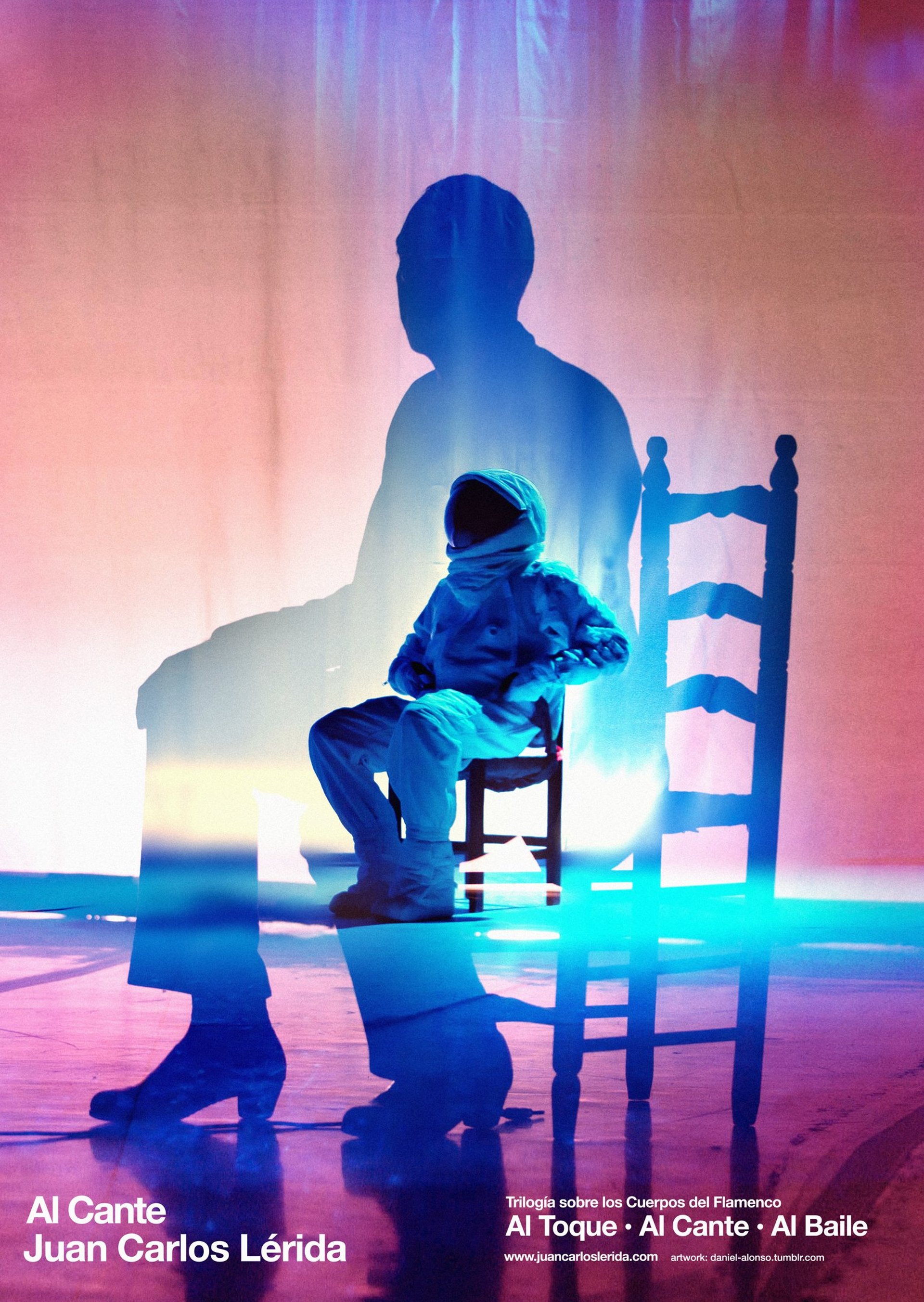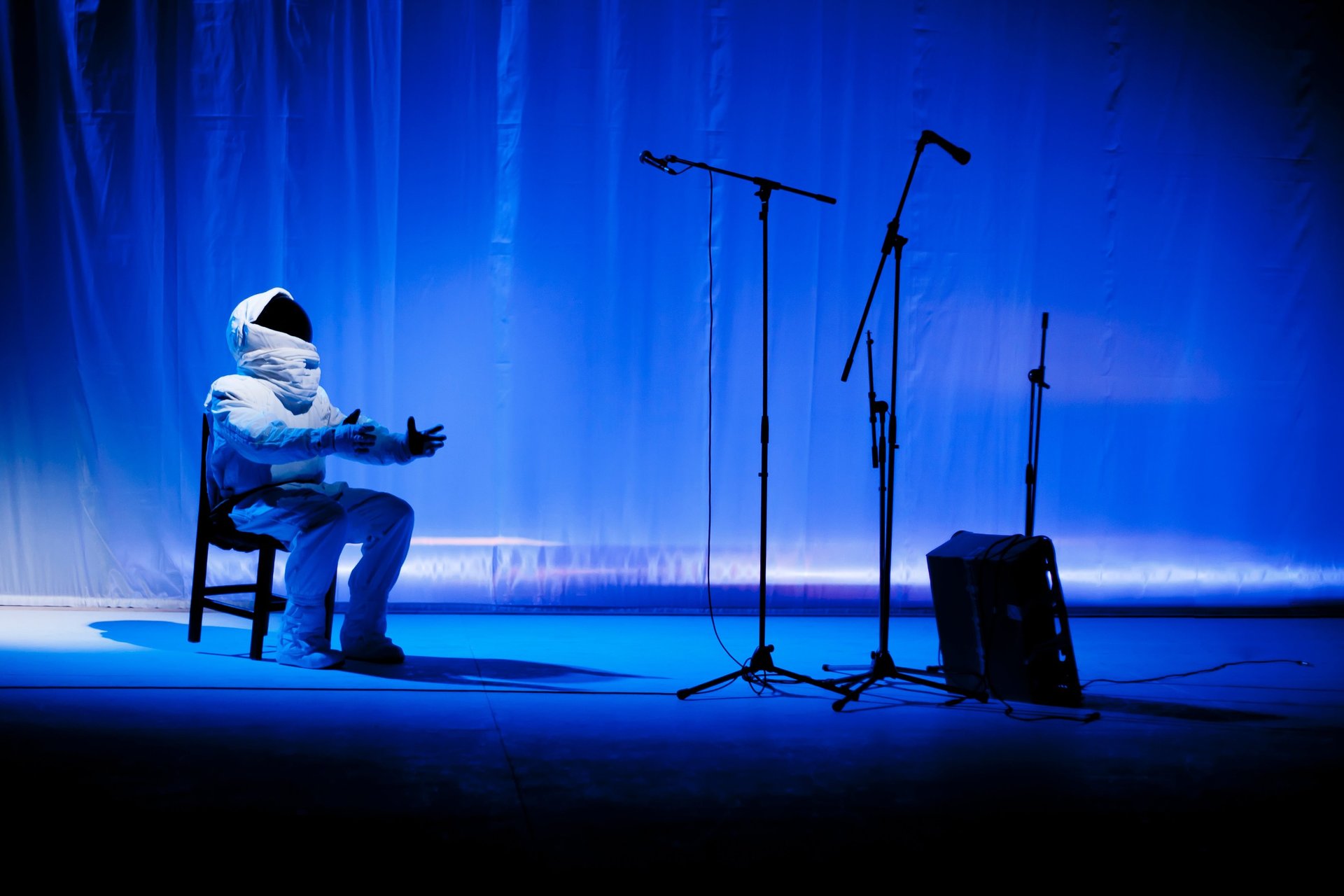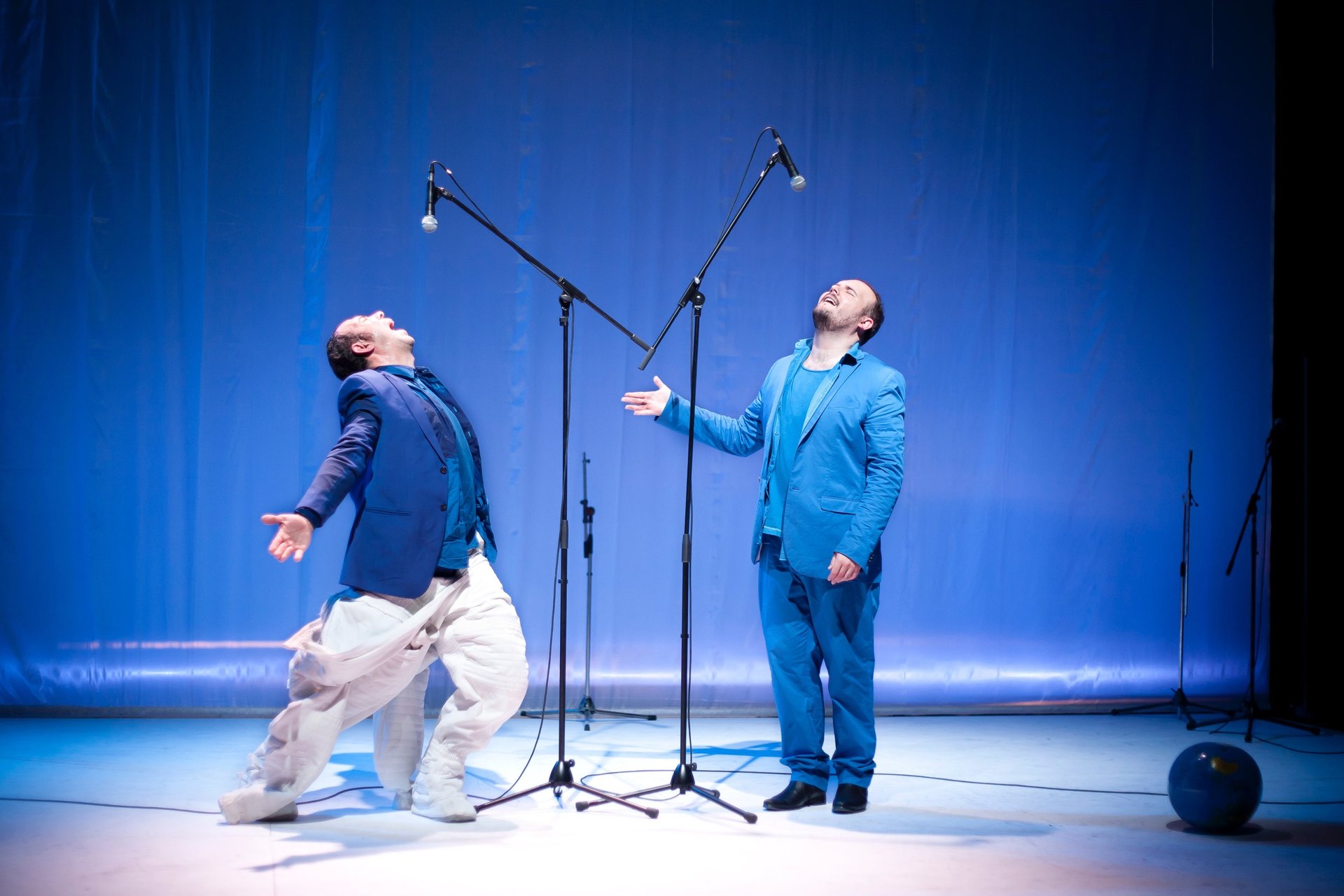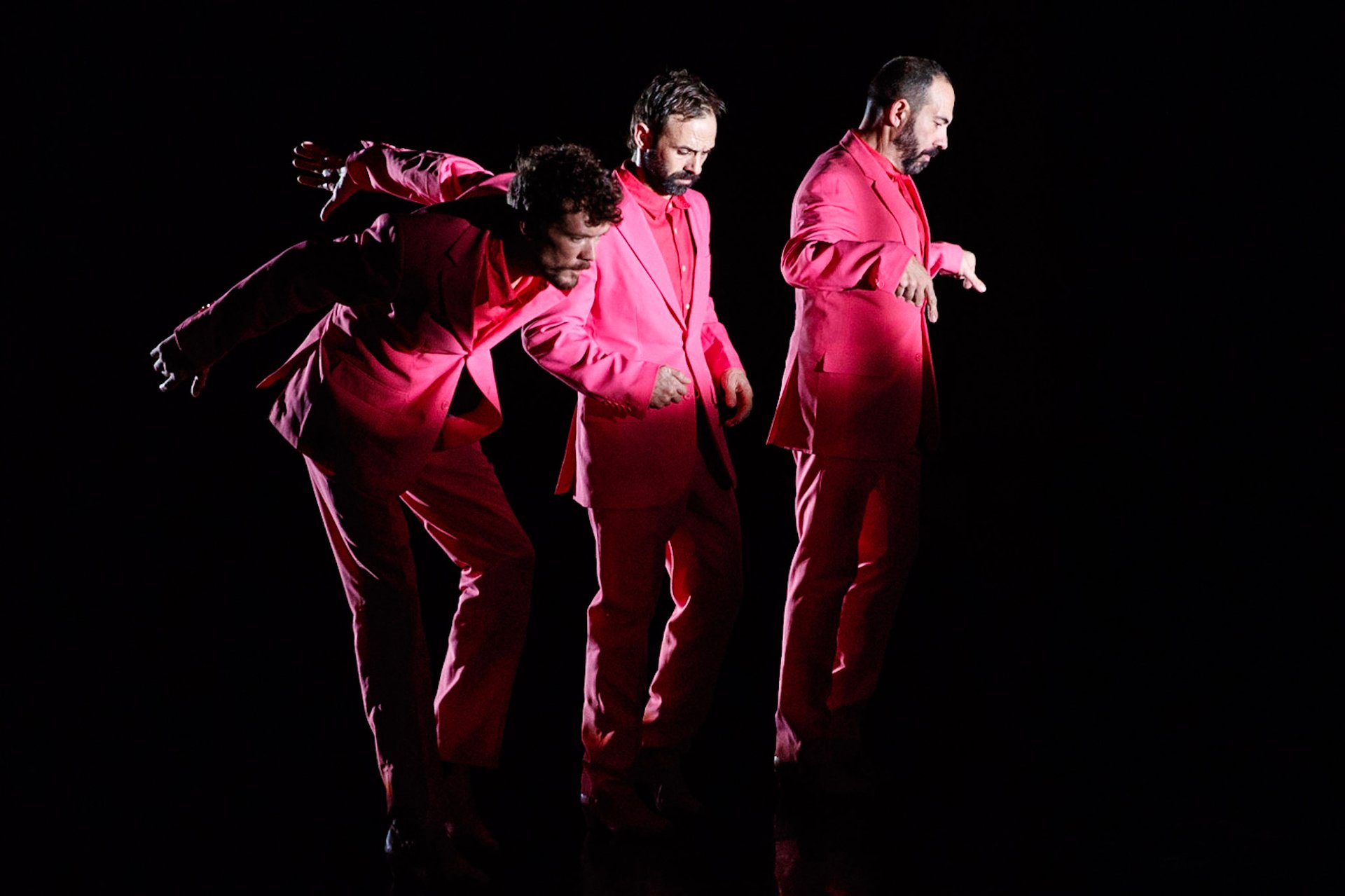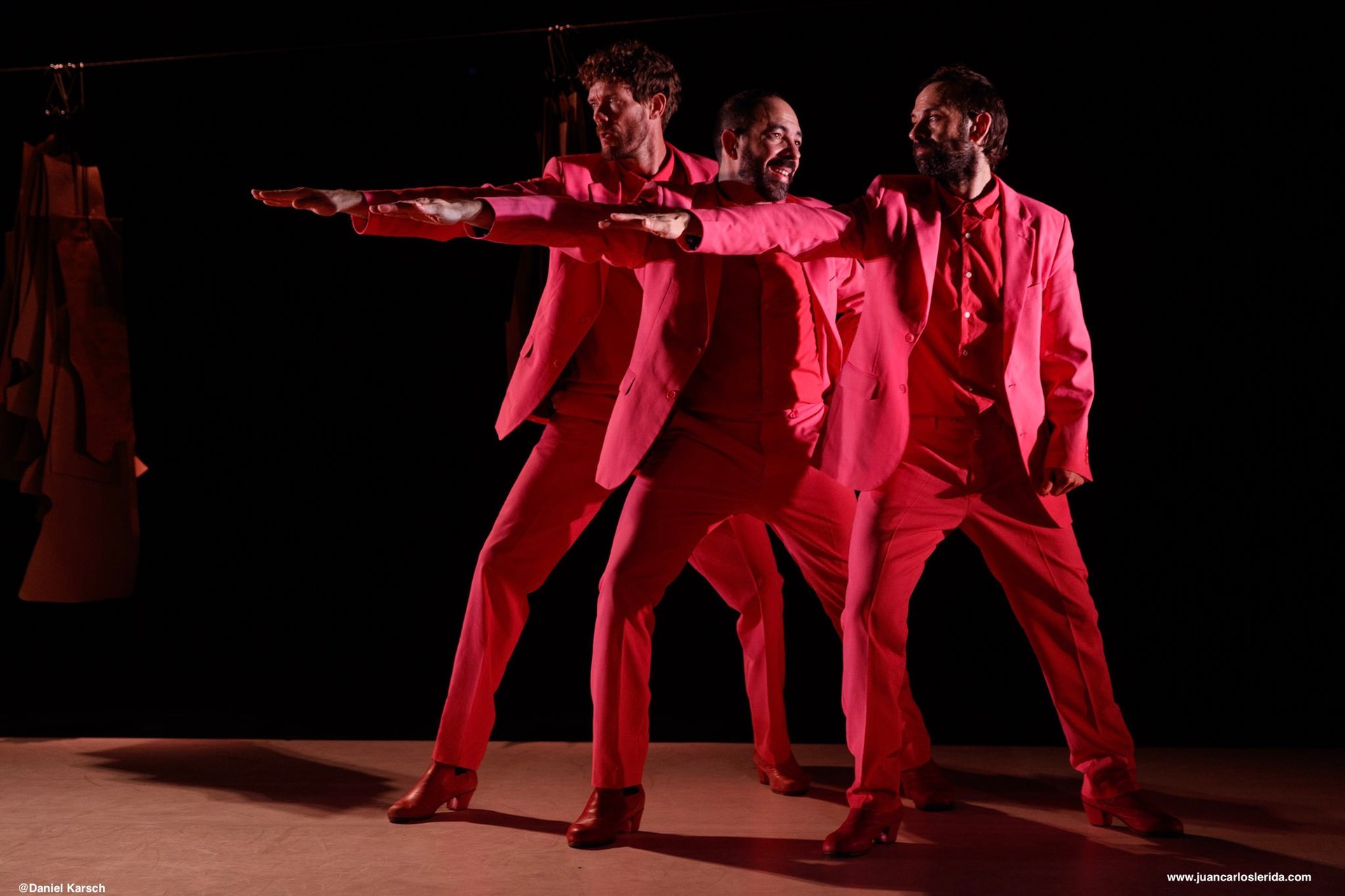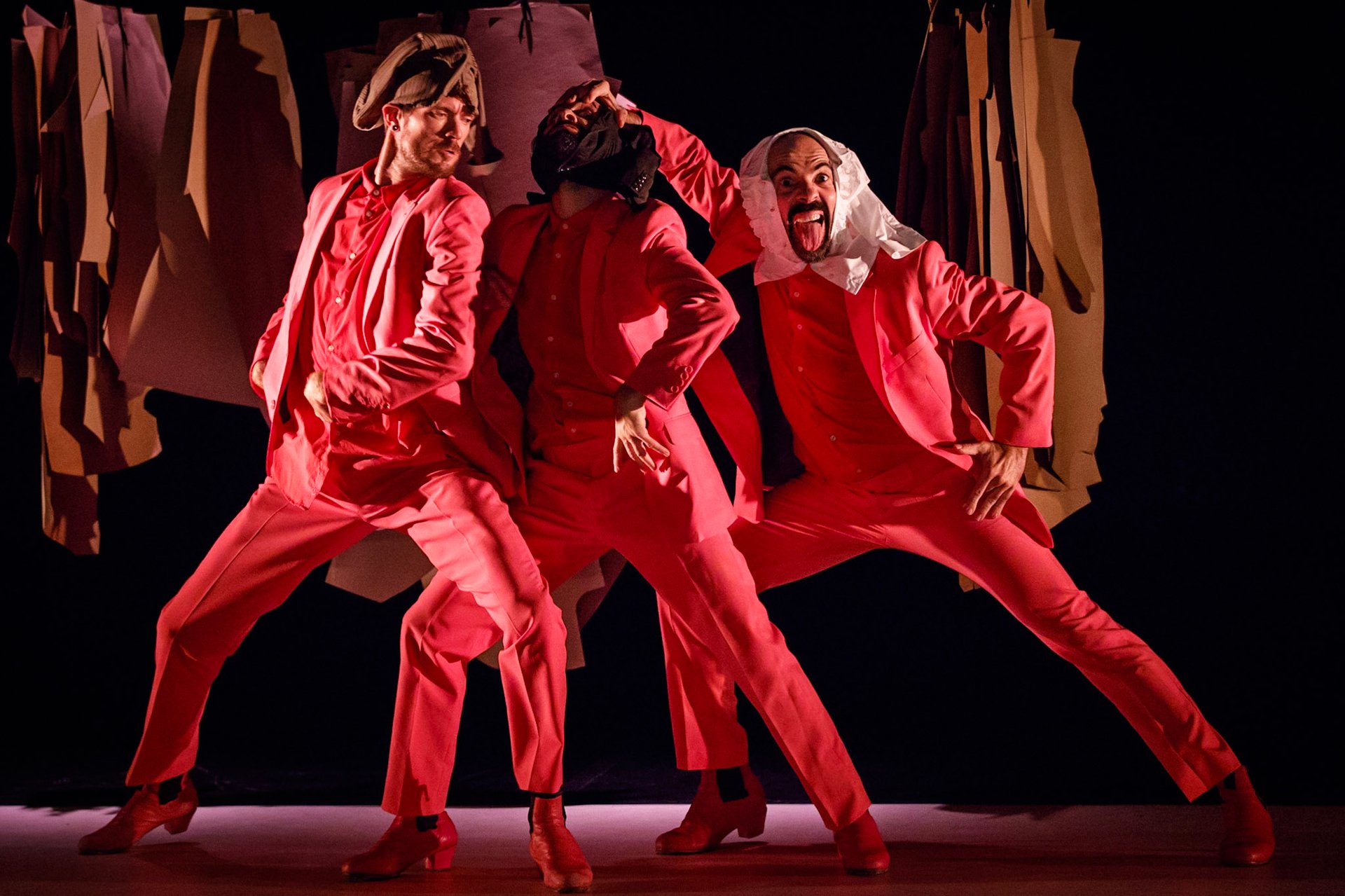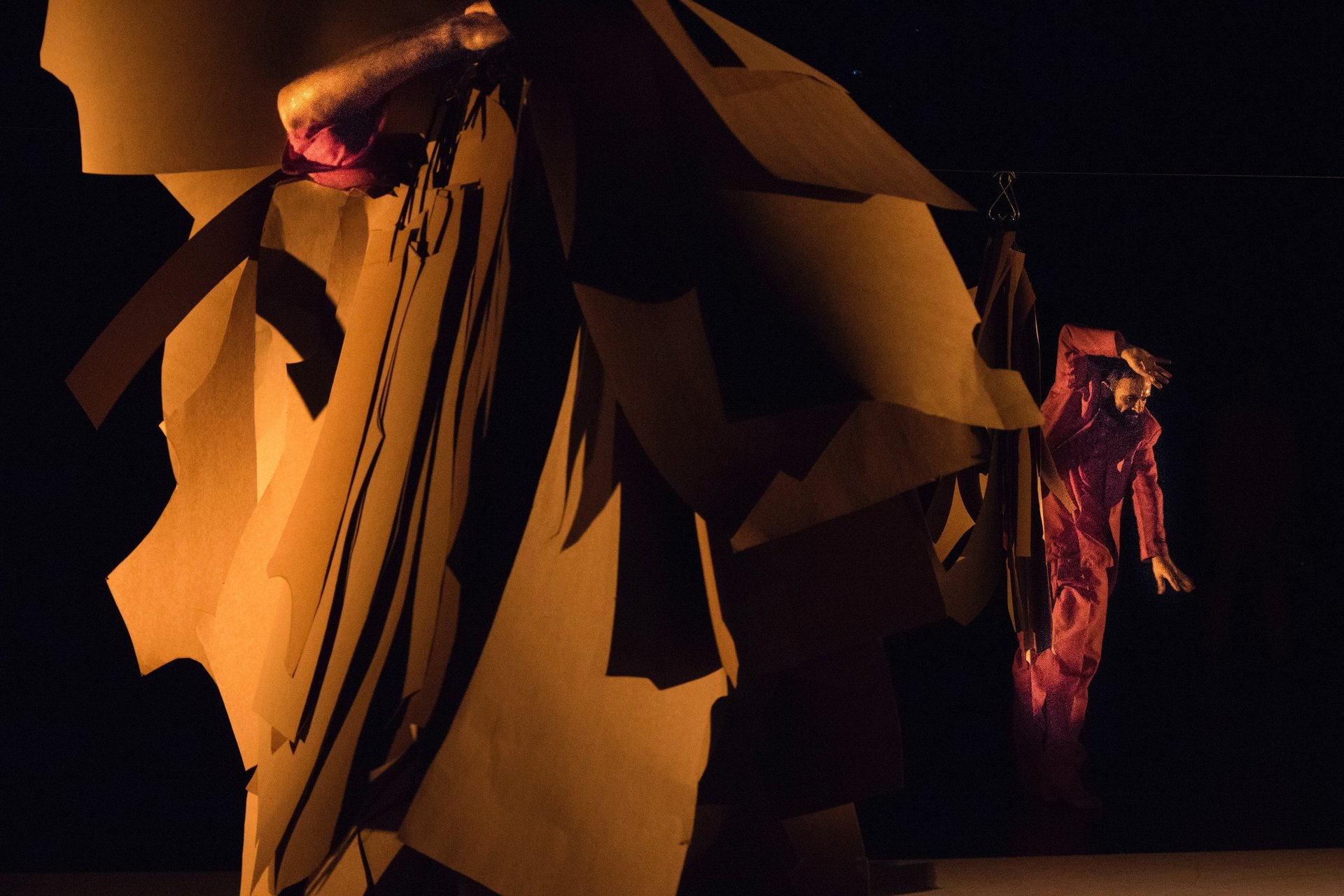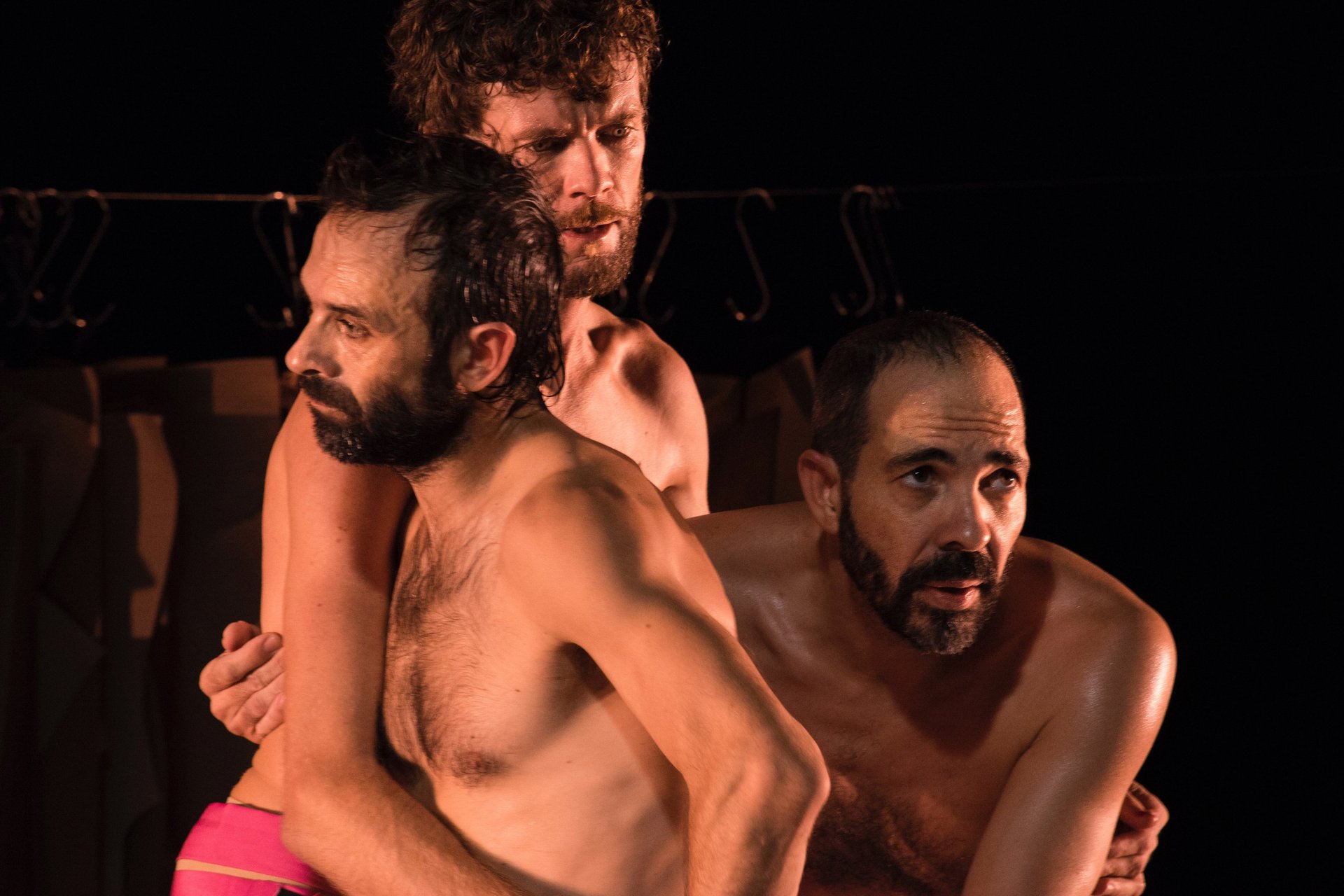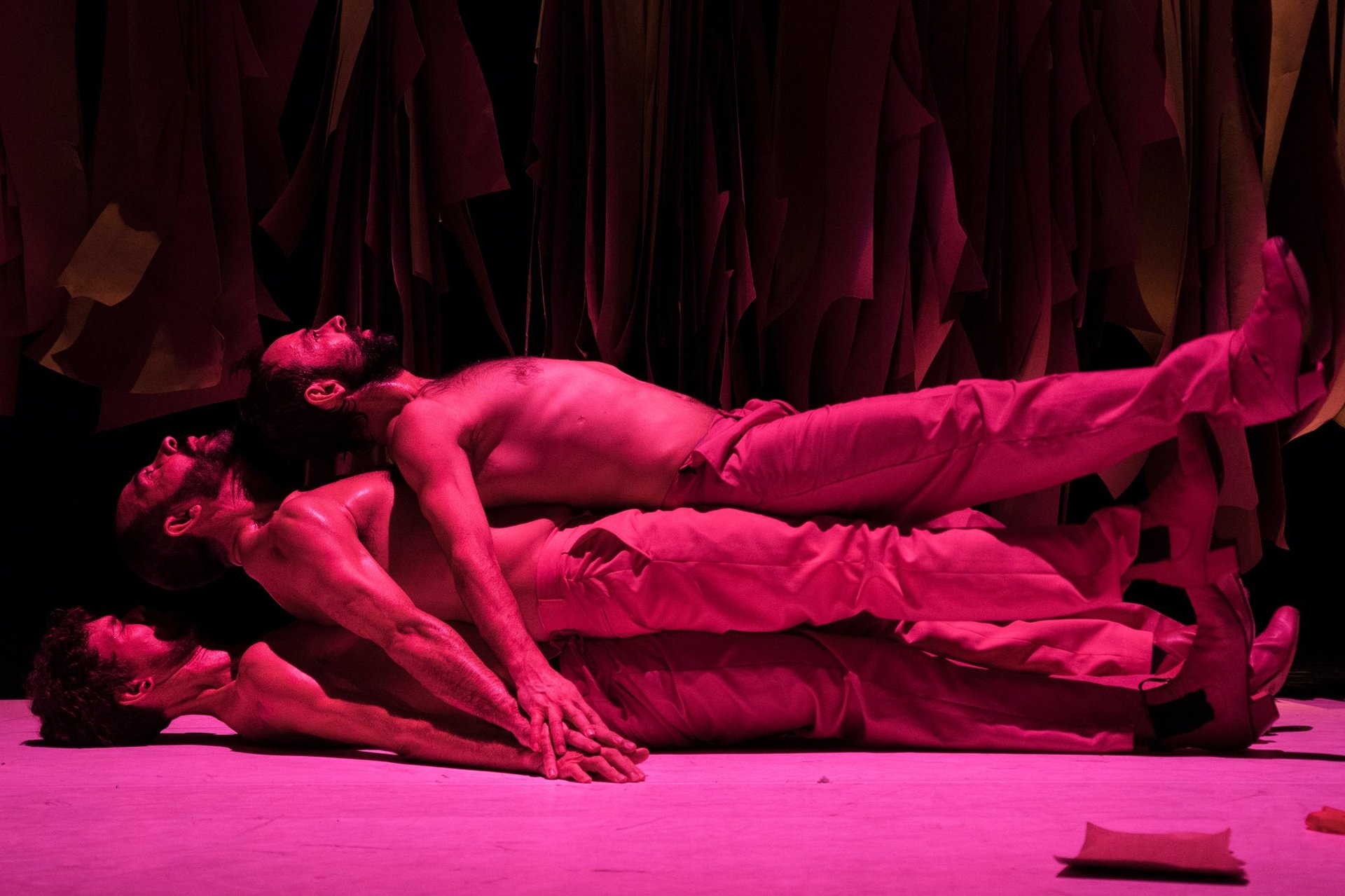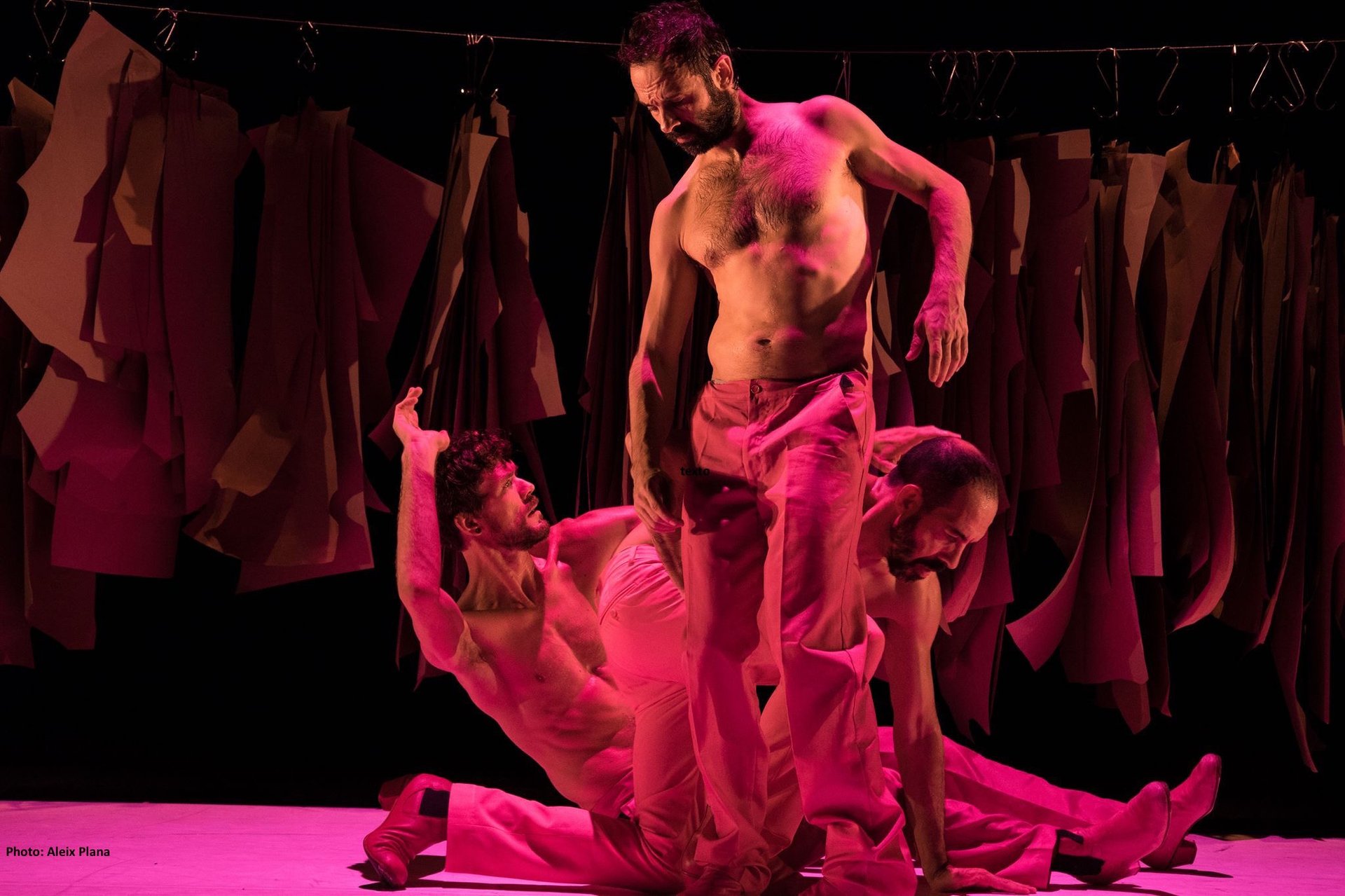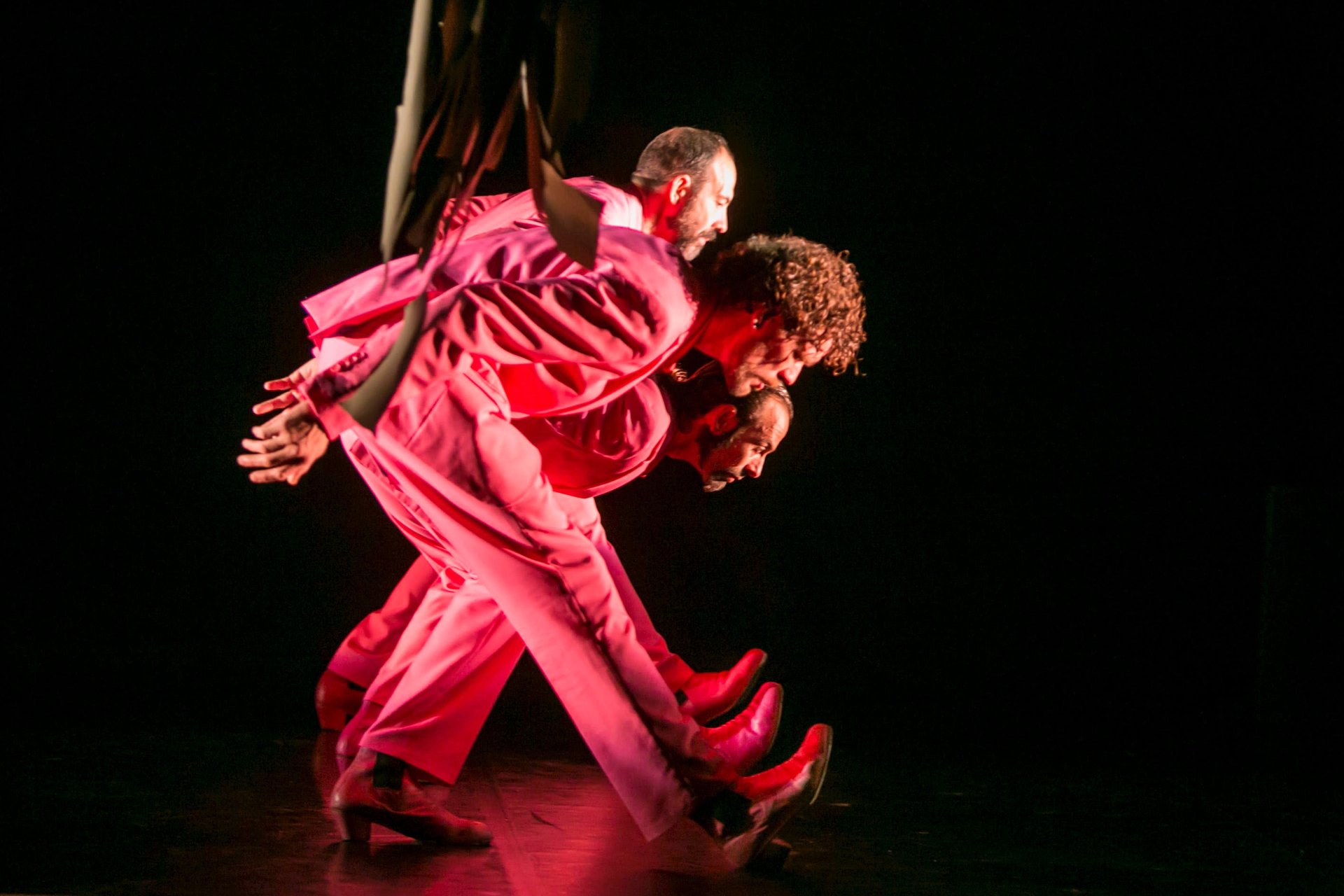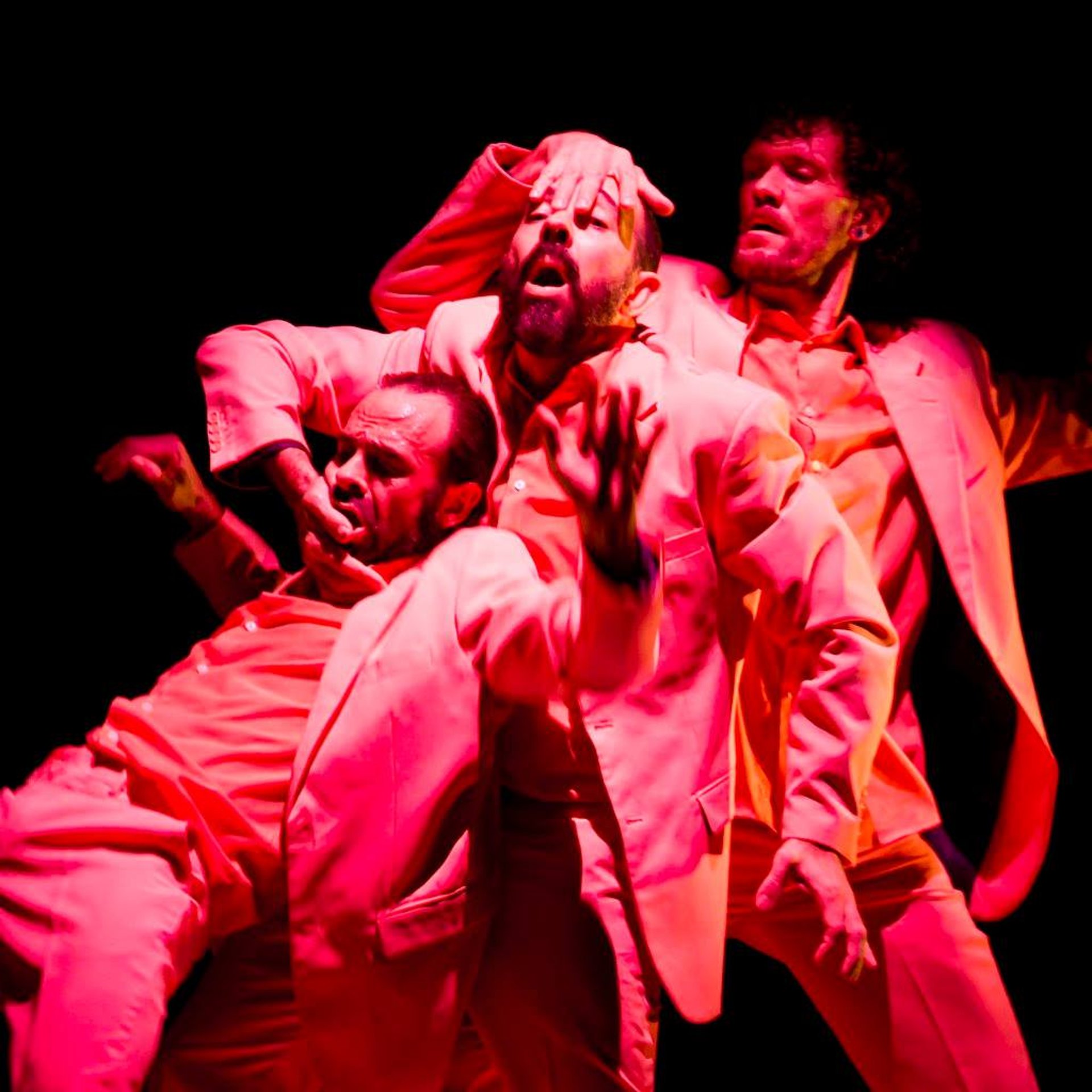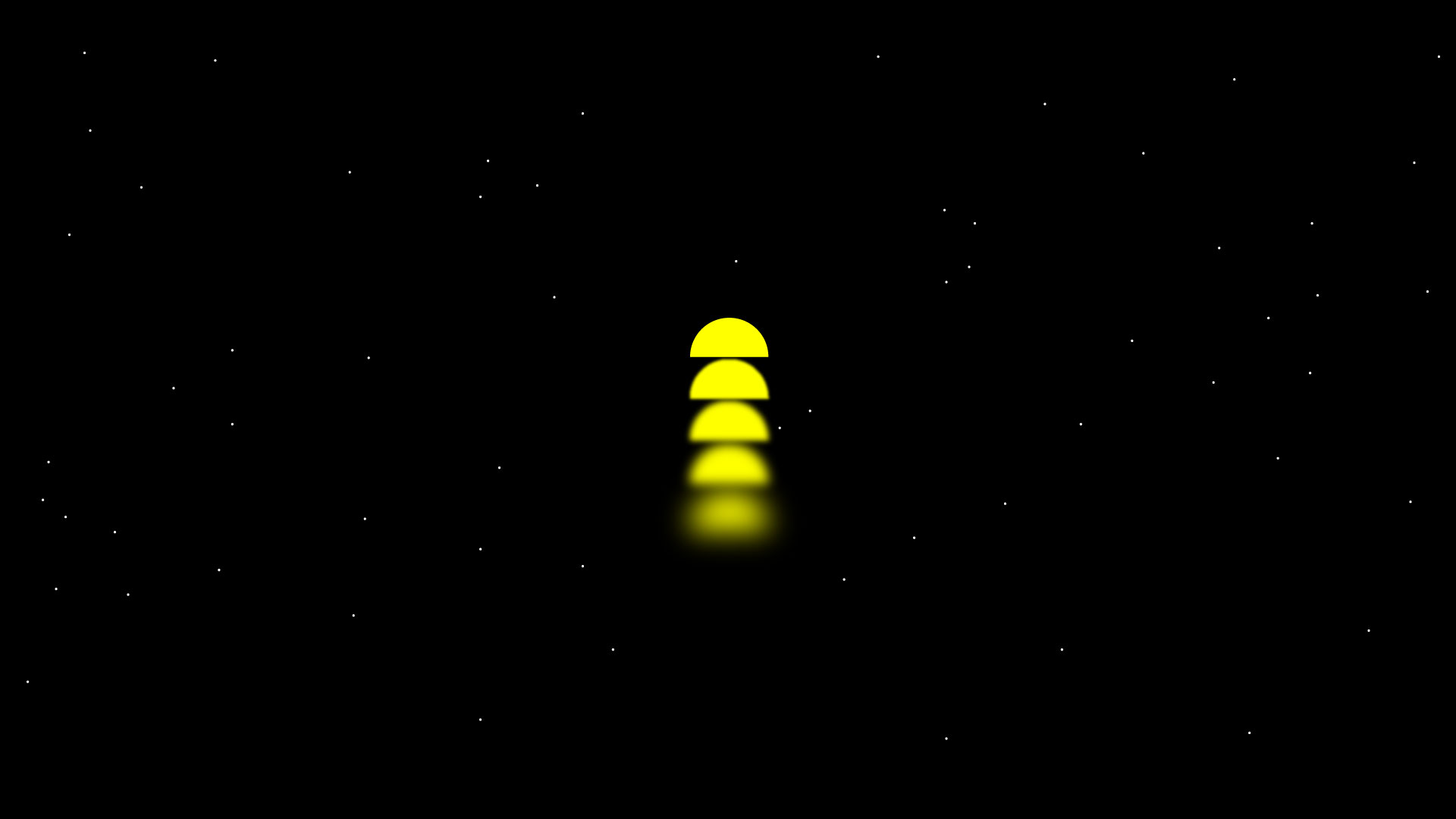
TRILOGY LOS CUERPOS DEL FLAMENCO
In my interest in watching the various bodies that represent the expressive and conceptual foundations of Flamenco: El Cante (The singing), El Toque (The guitarrist), El Baile (The dance), exposes me as Bailaor-Dancer, choreographer and pedagogue to discover intrinsic characters in those bodies and movements of these «characters» to dissect and expose them through a choreographic work. This I have tried to manage my capacity as researcher movement and creator of the dance, with the aim of showcasing new methods of transmission and reception of flamenco and dance, from own subject of study as well as myself. The method to follow is materialized from the realization of different approaches(acercamientos) to each of the basics of flamenco. Solo or accompanied I researched and presented each time the result of the creative process in scenic, literary or plastic formats. The completion of the last stage of rapprochement officially opens the piece.
It all started with the «Acercamiento al Toque*.» This process approach to anatomical and muscular, expressive and afflicted, social and political body who play Flamenco.These «Acercamiento» were made during the years 2008-2010. Along with flamenco guitarists, scene directors, artists and theorists of flamenco that process ended in a scenic piece composed of different «Tableau Vivant» entitled «El toque» whose official and final release consolidated the first part of my trilogy .
In 2011 begins «Acercamiento Al Cante.» Following the same procedure of my earlier work I approached the body of the singers having different Geographical territories partners.For the «Acercamiento» this time I was accompanied mainly by Cantaor el Niño de Elche as a subject of study and stage artist. After six «Acercamientos al Cante» where the outer space, the universe and the Moon became place where «Move Sing» Several Theoretical writings, Video-Dances, literary articles and scenic proposals culminating in the final piece titled «el Cante» was released in Tanzhaus (Dusseldorf)..It is time to «Acercarme Al Baile«.
Paradoxically I approach what I am. I intend to make various «Acercamientos al Baile» to observe me as a subject of study and as a member of the trade union to which I belong. Speaking of flamenco dancing body.
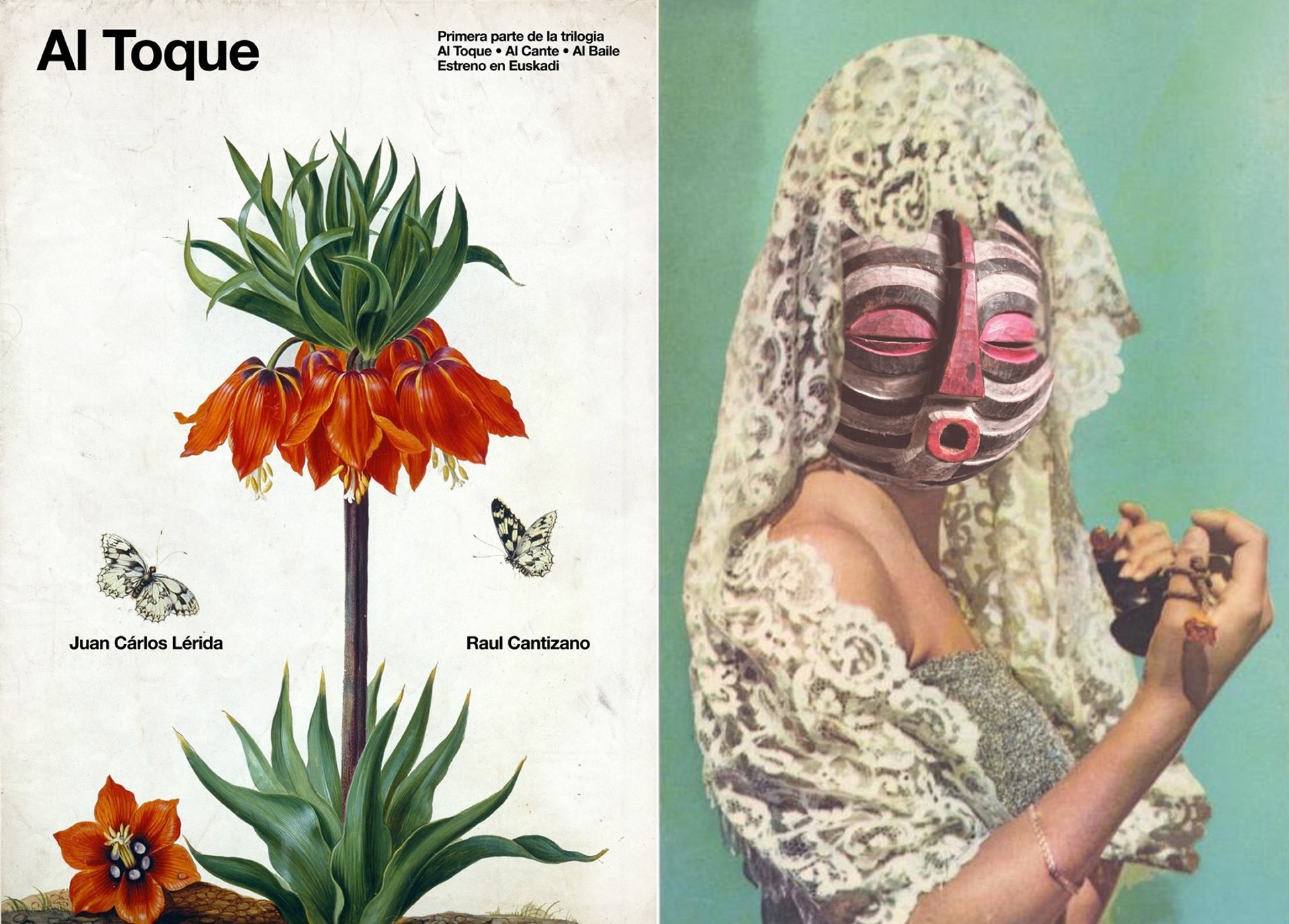
AL TOQUE
With both abstraction and repetition as tools of creation, the dancer and choreographer Juan Carlos Lerida converges to the foundations of playing the flamenco-guitar by using its musical standards as a reference. To expand into the origings of dance and play he not only disintegrates (fragments? dissolves?) the flamenco-dance into its elements, but guitar itself.
Four tableaus act as frames of his new work, in which Juan Carlos Lérida shows habits and customs acting as clues to help discovering the unknown. He shows facets of being – such as love, solitude, duality and death. Four tableaus, four instants of life.
JULIA PETSCHINKA
Direction and Performance: Juan Carlos Lérida
Direction Asistant: David Montero
Guitarrist: Raúl Cantizano
Set Desing: Antonio Godoy
Light Design: Marc Lleixa
/Desing and FotoVideo Artwork: http://www.daniel-alonso.tumblr.com
Production: Danilo Pioli / Dancebox.es
Photos: Jose Palomo
Premiere: Off Theater. Viena (Austria) 17 Agosto 2010
RESEARCH
Dates of Process
1º Acercamiento al Toque (1º Approach Guitar) 21-6-2009. Museo Picasso. Barcelona
2ºAcercamiento al Toque (2º Approach Guitar) 12-11-2009. Sala Trono. Tarragona.
3º Acercamiento al Toque (3º Approach Guitar) 29/30-1-2010 CAS. Centro de las Artes. Sevilla
4ªAcercamiento al Toque (4ªº Approach Guitar) 18-2-2010 Festival Mov-hi. Centro Párraga. Murcia.
5ºAcercamiento al Toque (5º Approach Guitar) 20-4-2010 Festival Cádiz en Danza. Cádiz.
ESTRENO Al Toque 17-8- 2010, OFF Theater, Viena
«Al Toque». Presentations.
4/5- 10 2010- Centro de Cultura Antiguo Instituto. Festival Danza Gijón.
6- 11-2010- Fira Mediterranea. Barcelona
11-2-2011- Tanzhaus Festival Flamenco. Dusseldorf. Germany
27-7-2011- TheaterLabor- Bielefeld. Germany
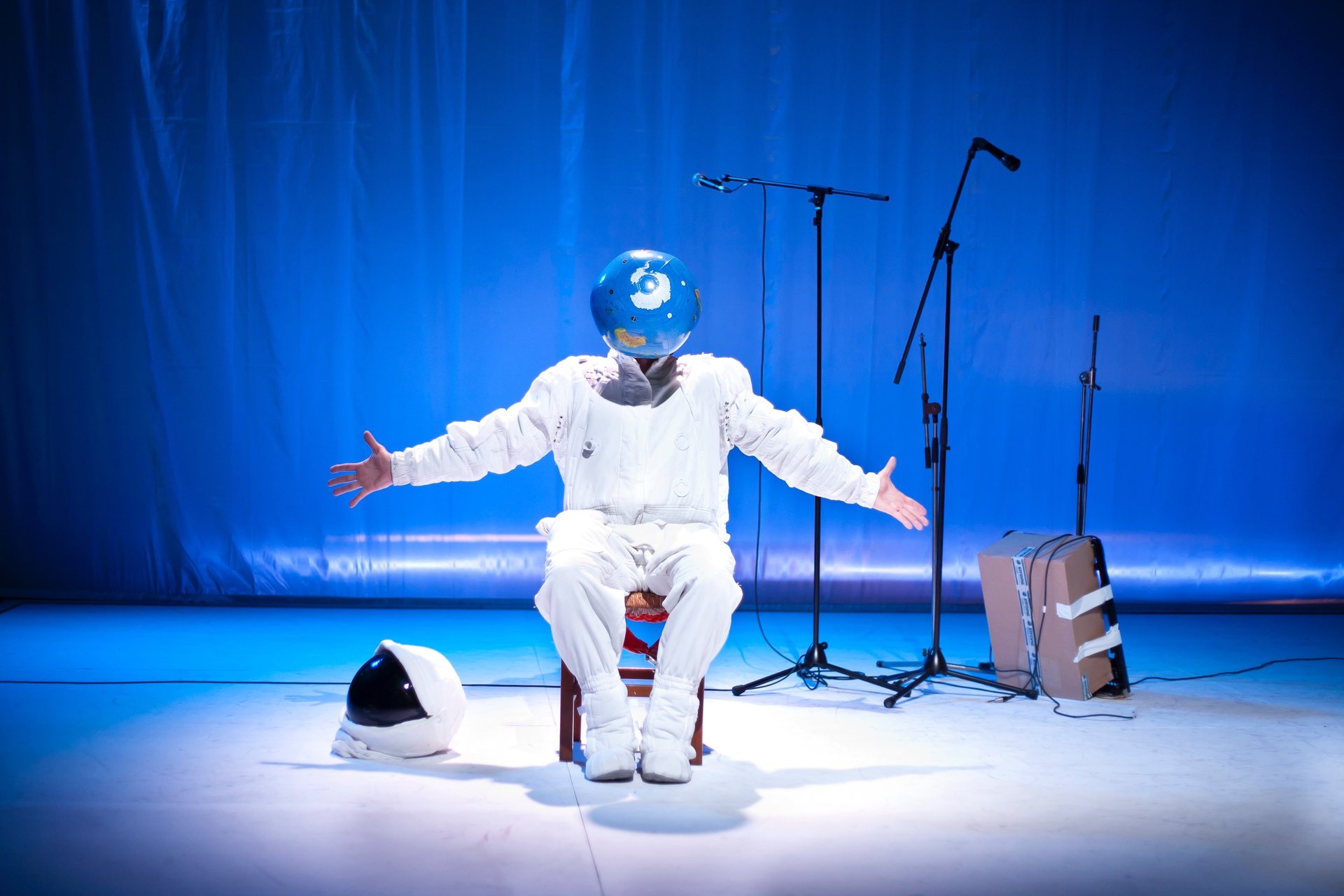
AL CANTE
A flamenco singer in the emptiness. Space to moderate and take root. Using the historical singing standards of flamenco as a reference and drawing on abstraction and repetition as creative tools, the dancer and choreographer Juan Carlos Lérida, together with flamenco singer Niño de Elche, are breaking down dance and song into it basic components. Bodies that move closer together through various “Tableau vivant” originating from those who sing, those who listen or from anyone who wishes. Following the sample “Al Toque” (To theGuitar) released in Vienna 2011, “Al Cante” (To the Song) is the second installment of this trilogy dedicated to the expressive foundations of Flamenco.
The work of Lérida is both a story and an act: a testimony of the process and of the research on a certain subject, and an artistic act shared with the public. This methodology, which he has continually reworked along his journey, can be distinguished in the recent works of the last few years: a three-piece work revolving around the three basic components of Flamenco language – guitar, song and dance. Lérida’s early productions focussed on the toque (the guitar) from different approaches and resulted in a show. Following his first set of productions that focussed on the toque (the guitar) exploring it from different approaches, Lérida has been developing the second part of this three-piece work since early 2012, this time focus is on the cante (the song). Each approach is therefore not only an artistic act in itself but also a reflection of a process. It is a way of sharing material with spectators who are distant from both the final show and the work in progress. Lérida takes to the stage (that’s to say the moon) with Niño de Elche, a Flamenco singer who by mixing knowledge and artistic curiosity, is making the languages of the flamenco grow, and David Montero, actor, writer and director who for years has been developing a fruitful dialogue with flamenco. All three from their unique perspectives and with the common background of the two previous approaches, move closer to that “thing”–the flamenco song–which, as a subject, is strictly physical. They are simultaneously conversing with the image (the real and the mythical) that flamenco has generated in its almost two centuries of life to offer an unpublished piece in every sense: something new (never seen before) that takes form as the spectator receives it, enlightening unseen places, combining risk and rigor.
David Montero
Direction and Choreography: Juan Carlos Lérida
Dramaturgy: David Montero
Interpretation: Juan Carlos Lérida, Niño De Elche, David Montero.
Light Designer: Marc Lleixa
Set Designer: Andrés González
Production: Danilo Pioli (Dancebox.es)
Photo: Jordi Font (1-4), Daniel Karsch.
Premiere: Tanzhaus-Dusseldorf (Alemánia) el 17 Abril de 2014
Coproduction: Asoc. Flamenco Empírico,
Supported by: TanzHaus NWR (Dusseldorf), El Graner (Barcelona) Departament de Cultura de la Generalitat de Catalunya, Centre la Mercé (Girona) L’Estruch (Sabadell).
Thanks to: Nouespiral danza (Girona), Im Raum Flamenco Festival (Viena)
*Juan Carlos Lérida/ Nominado mejor bailarín de danza 2016 por “Al Cante”. XVII Premios de la Critica Barcelona
RESEARCH
Dates of process
1º Acercamiento al Cante (1º Approach to Flamenco Song): 26-4-2012. Centre Cultural La Mercé. Girona
2ºAcercamiento al Cante (2º Approach to Flamenco Song): December 2012. Sevilla (Residence)
3º Acercamiento al Cante (3º Approach to Flamenco Song): 2-8-2013 OffTheater. Viena. Austria
4ªAcercamiento al Cante (4ªº Approach to Flamenco Song): December 2013. Sevilla ( Residence)
5ºAcercamiento al Cante (5º Approach Guitar Flamenco Song): 5-4-2014. L´Estruch . Sabadell.
6ºAcercamiento al Cante (6º Approach Guitar Flamenco Song): 12-4-2014. Terrats en Cultura. Cicle Coincidencies. Barri Ginardó. Barcelona
ESTRENO AL CANTE. 17-4-2014 Tanzhaus NRW. Dusseldorf
«Al Cante». Presentations.
1- 11-2014- CC. Matadero. Festival Periferia. Huesca
4/5-11-2014- TNT- Mes de Danza. Sevilla.
23- 5- 2015- Mercat de les Flors. Barcelona
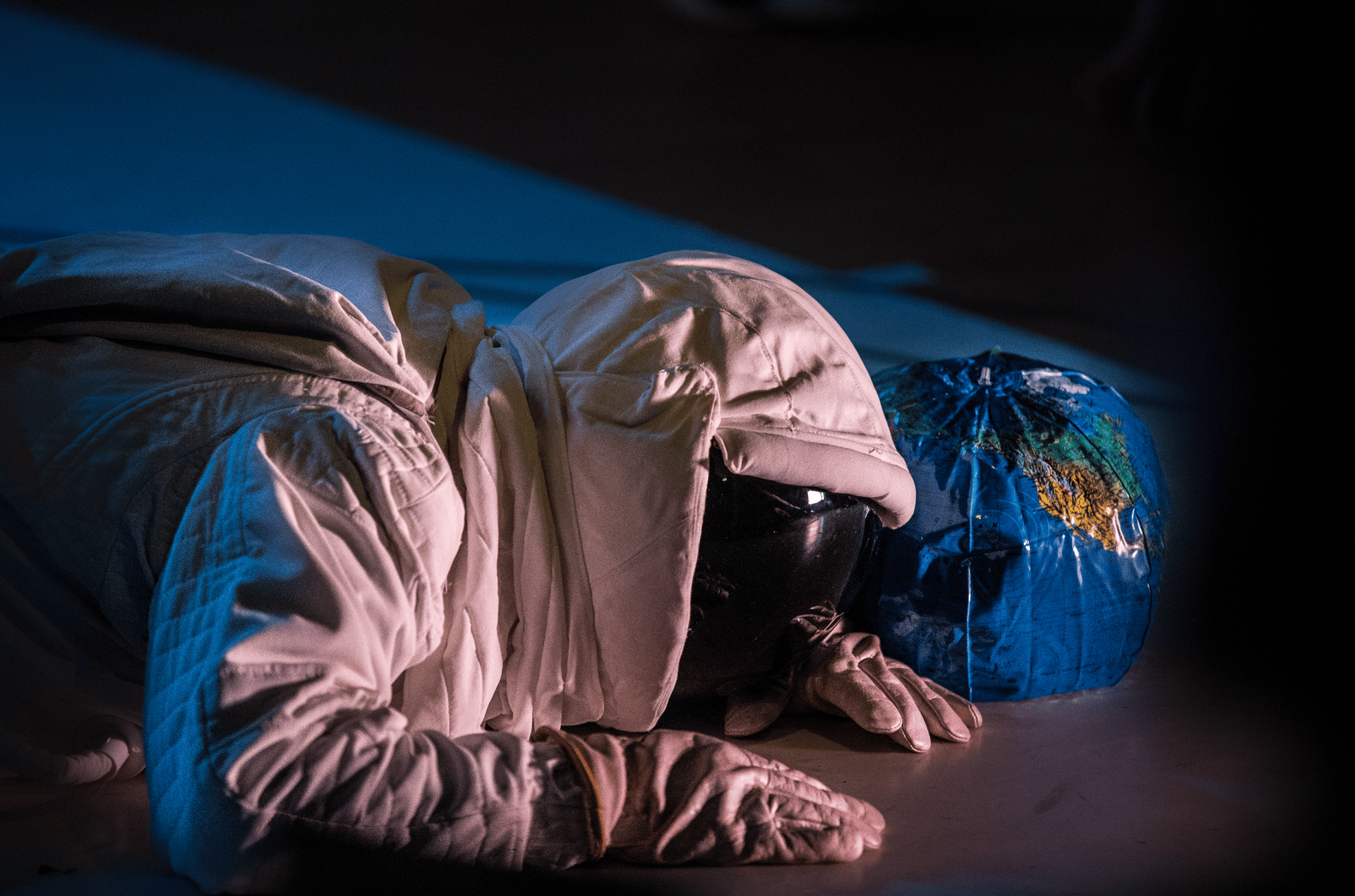
PRESS / REVIEWS
MERCAT DE LES FLORS. FESTIVAL CIUTAT FLAMENCO. BARCELONA.MAYO 2015
Crónica de Nando Cruz para "El Periódico de Cataluña".
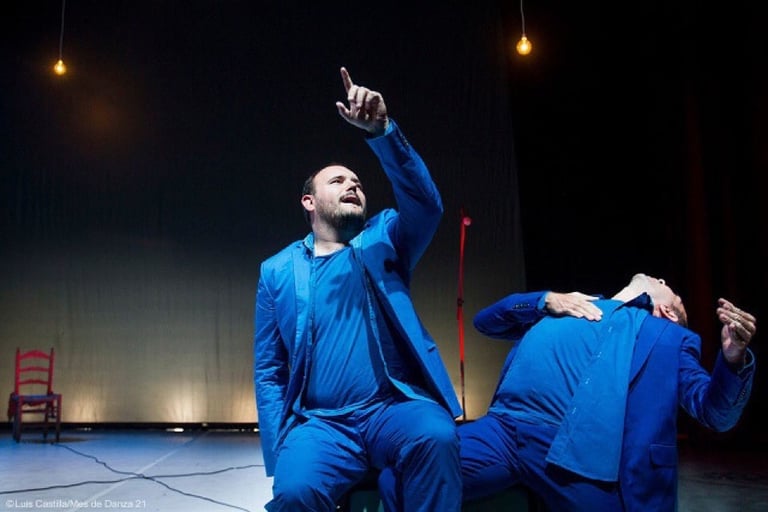

MES DE DANZA. TNT. SEVILLA. NOVIEMBRE 2014
Reseña de Mercedes L. Caballero. http://unblogdedanza.com/2014/11/06/clase-magistral-de-flamenco-avanzado/
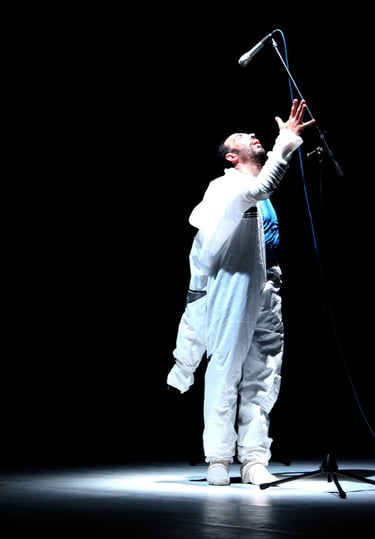

MOUVEMENT.NET. ( Carolane Sánchez) English Traslation:
A new generation revisits Flamenco dogmas. With the recent creation of Al Cante, Juan Carlos Lérida focuses on the emblematic figure of flamenco singer (Cantaor).
For over twenty years ago, Juan Carlos Lérida is an avan-garde artist of Flemish art scene. Transgressor,for his constant perceptive reassessment of nervousness of this genre, the artist faces today in his latest piece to a priesthood of the historical construction of Iberian art: Flamenco cante, and by extension, that which supports, makes breathing and gives "body" the figure of the "cantaor" Whit Al Cante (referring to flamenco), Juan Carlos Lerida passed to a second stage in his project to revisit the structural foundations of flamenco: triptych guitar-sing-dance.This new piece indeed happens to "Al Toque" (2010, title referring to flamenco guitar), where, with guitarists José Luis Rodríguez and Marta Robles, Juan Carlos Lerida localized flamenco guitar in the middle of his questioning. Through revisiting the standards of the Spanish guitar, body dialogues operating: the instrument exercised a centripetal force framed by the relationship between the dancer and guitarists.This search paved the way for the re-appropriation of Flemish elements generally sidelined being static on a physical level. Today it's time for the flamenco being incorporated into the study of the trajectory of the "bailaor". Developed on a laboratory table leridiano "al cant jondo" is indeed the least moved in the last thirty years,contrary the revolutions in dance operated by artists like: Belén Maya, Israel Galván, Andrés Marín, Rocío Molína, etc. Juan Carlos Lérida, free electron but also intrinsic figure of this generation, today shows the result of an investigation carried along with the actor and playwright David Montero (whose piece Guests, directed by Belén Maya, has just been awarded by the critics of Jerez festival) and Francisco Contreras Molina cantaor, whose stage name is Niño de Elche, singer of the younger generation, which has become famous for its flamenco revisit the works of painter Francis Bacon with his piece VaconBacon.Cantar las Fuerzas (Singing Forces) (2012). Following a long process of experimentation, the three presented in Dusseldorf, within the Flamenco festival Tanzhaus, on April 17, 2014, the debut of "Al Cante". With this piece, is the backbone of flamenco which opens to the reflexivity of its construction, relief,et who questions his own motivations. El cante is open to other audio jacks because finds, this time, naked of any reference and expectation. It gives to be noticed, seen in his carnal manifestation. While Niño de Elche sings, Juan Carlos Lérida reacts to his movements, gestures, habitus of singer, wich made part of the gestural vocabulary understood by fans of flamenco, such as finger raised in the air in reference to Seville singer Antonio Mairena, or expressions of distortion mouth echoing the flemish singer Agujetas. The voice of david Montero says almost naturalistically, minimalist, distanced, details that operate on the body of Niño de Elche, interpreted according to different clubs.Juan Carlos Lérida, plays, surround, observed, returns, passes the object of study. All care is performed on the traces left flamenco Cante who recites the vector, the route, the cantaor finally. To image of Federico García Lorca, and his verses addressed to the moon, flamenco cantaor seen by leridiano universe is transported into space. Juan Carlos Lérida wearing a suit cosmonaut in a moment of the piece, made us in watermarks this question: would Happen if the last surviving Cantaores was sent to the moon to preserve knowledge of flamenco? Under this scheme, first funny, the skeleton of a piece as both poetic review is drawn.Mocking the close relationship of Flamenco with the archival dimension, abit speech rating, to complain about what is still flamenco and what is not. That Flamenco or amateur who has not heard these famous tiptoe: "when does the "solea" not know what ... "; "Now that's flamenco ...", "it is not" ... etc.. The space between flamenco and dogma is indeed sometimes narrow, but seeks to open.Juan Carlos Lleida search continues the dismantling of a genre that is diffracted and deployed in multiple ways. The reflections are then projected tracks to rethink the set, so called immutable, it seems important not judgment, but putting the relief of the gear mechanisms play in the writing of art history.
STIMBEGZEITUG (Von Klaus Lipinsky) English Traslation:
Flamenco Festival. Aufs Wesentliche reduziert. Von Klaus Lipinski
21. April 2014, 14.41
Reduced to the essentials
Dusseldorf. The moon. Hardly a romantic metaphor is more commonly used. Also in flamenco. So you can also make it to the stage. This
thought in any case Juan Carlos Lerida, the great avant-gardist among Flamenco dancers. As a rather unromantic artist, he debunks stereotypes, outdated ideas in a scientific reality. How the moon. At the Dusseldorf Flamenco Festival he showed the world premiere of his new piece "Al Cante" in which he examines singing and singers from within and without. Ten days Flamenco fans came from all over Germany and Europe for courses and performances in dance house NRW. Because once again taught famous dancers in person. Lerida also would be a great dancer outside of flamenco. He discoveres slowness as part of his movement intensity, uses small gestures in order to achieve their own way for very poetic effect. A dancer who is able to phrase his movements without music as a good singer. Traditional Flamenco is just an additional possibility of expression for Lerida, but one with a very strong force. He likes to split it into its components, such as when rhythms are beaten only by hand. Silence at the beginning. Yet the movements are not more than a mimetic imitation of singing, they will quickly become an emotional interpretation, a visible representation of the intensity, which reflects the movements of the singer, and he finally pretends by counting the rhythm. . A convincing concept for an increase with a surprising result: The singer himself became a dancer. Nino de Elche sets past all the prescribed flamenco poses. He does not loose emotions, but gaining of expression. Not in the background, but as a partner on the same level. Antonio Mairena was seen as silent projection in the background. The famous conservative keepers of flamenco, who was opposed to any renewal of flamenco. What a contrast, and how much gain Lerida and de Elche from today's perspective the comparison.
Josep Ache, Diari de Sabadell 09.04.2015
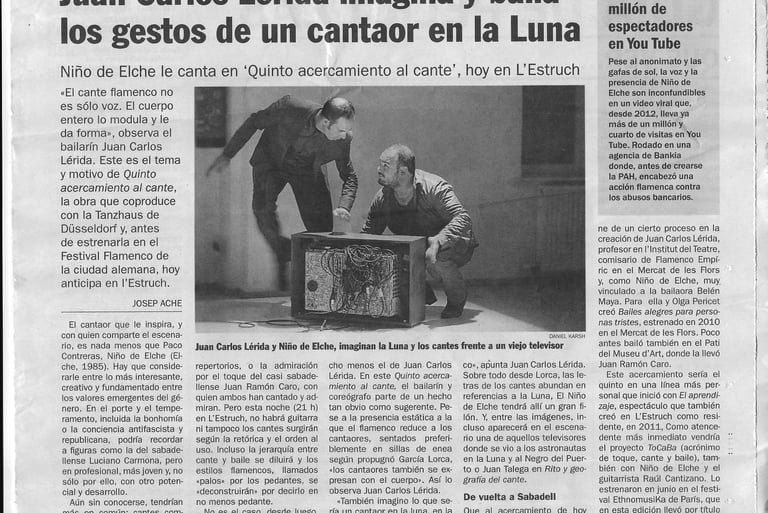

(Extract) ....the show goes beyond the poetic in dance or gestures. Immerse in the narrative with a succession of scenic entrances, a bit like the clowns even if performance is more accurate.
TANZ.AT (Edith Wolf) English Traslation:
Im Raum Flamenco: Lérida und Maya; 6.8.2013
A space for the experiment. Looking for new ways in traditional flamenco, the arists of the first edition of the festival "Flamenco in space", which feels especially obliged to contemporary and experimental forms. Dancing and singing was the focus - so consequently it has become the motto of the event.
Easy going, carefree and refreshing Juan Carlos Lerida and Francisco Contreras, "El Nino de Elche" and the actor and playwright David Montero disassemble the much celebrated moon and at the same time the formal language of flamenco. In the space suit Lerida simulates weightlessness while Contreras tests how the voice could probably sound in space. Now the moon is deprived of his romantic connotation, because now the moon drivers have a view down to the inflated balloon-earth and play football with it. And when it comes to the moon, of course, the TV may not be missing, as an element of percussion, stage and set piece ..... In the partly improvised performance, the third approach to the singing (original title: “3° acercamiento al cante”) of the trio after initial bewilderment ("where's the Flamenco?") it comes to an entertaining ease. Lerida, Contreras and Montero develop the piece along a rhythm that like this probably can come only from the Spanish dance - and of course there is also in this radically deconstructed flamenco show one or the other Zapateado, one or the other singing part, percussion and palmas including, supplemented by music from the band.
..........
Nº 110 Oct/Nov 2013
Text: Anja Abels
Photo: Daniel Karsch
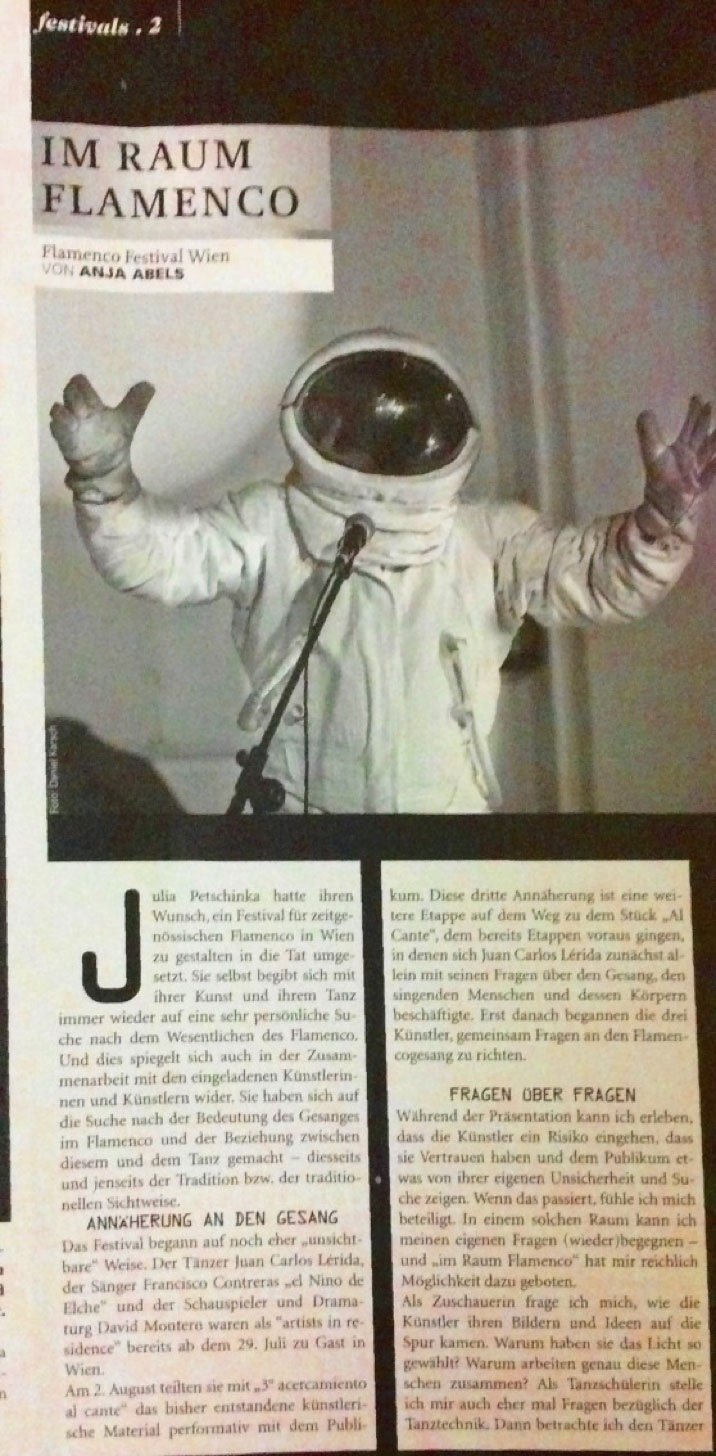

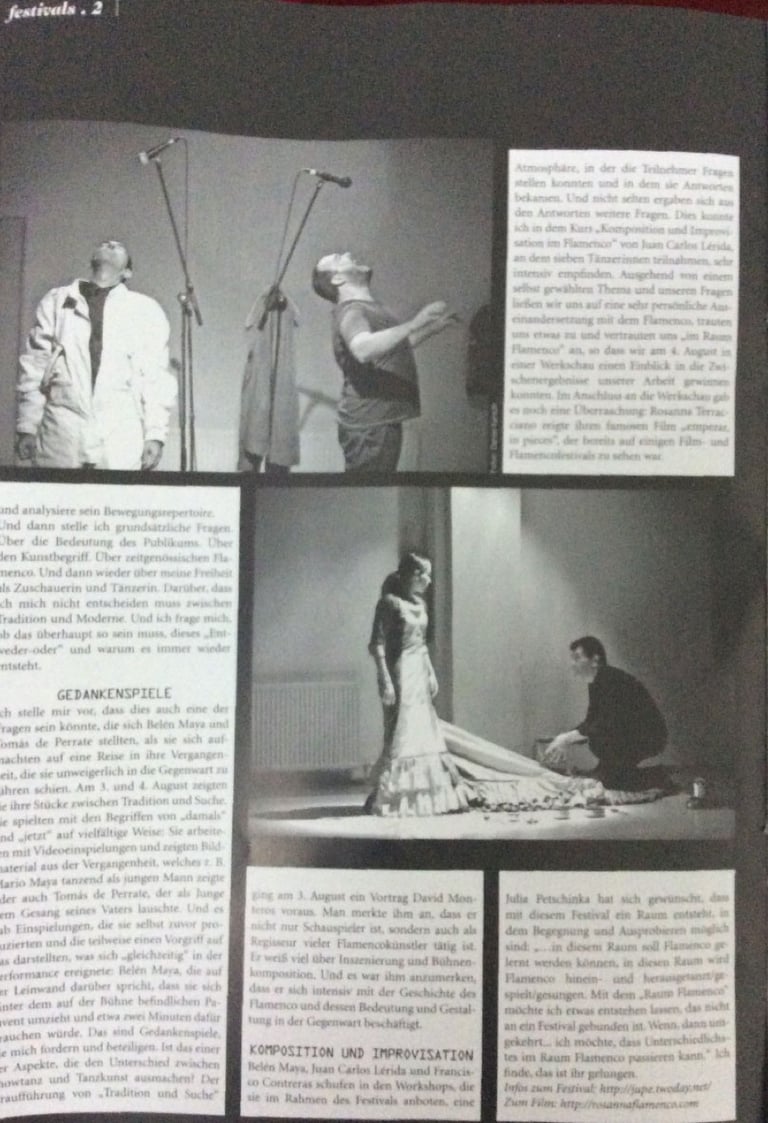

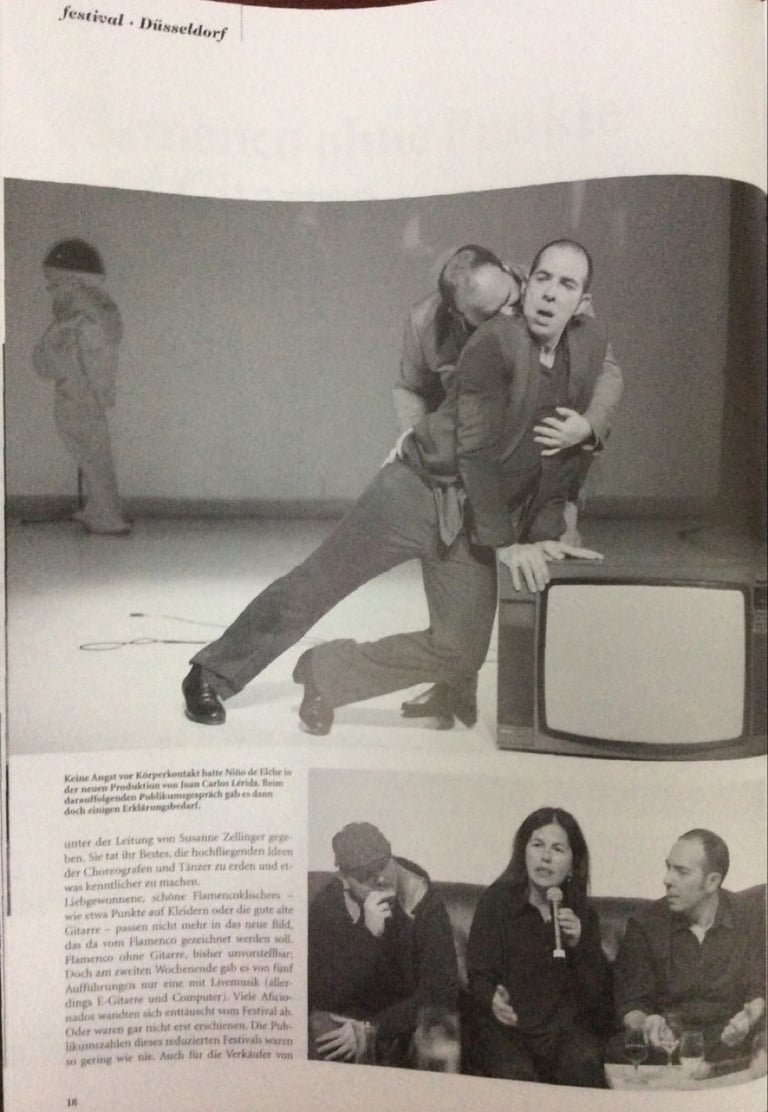

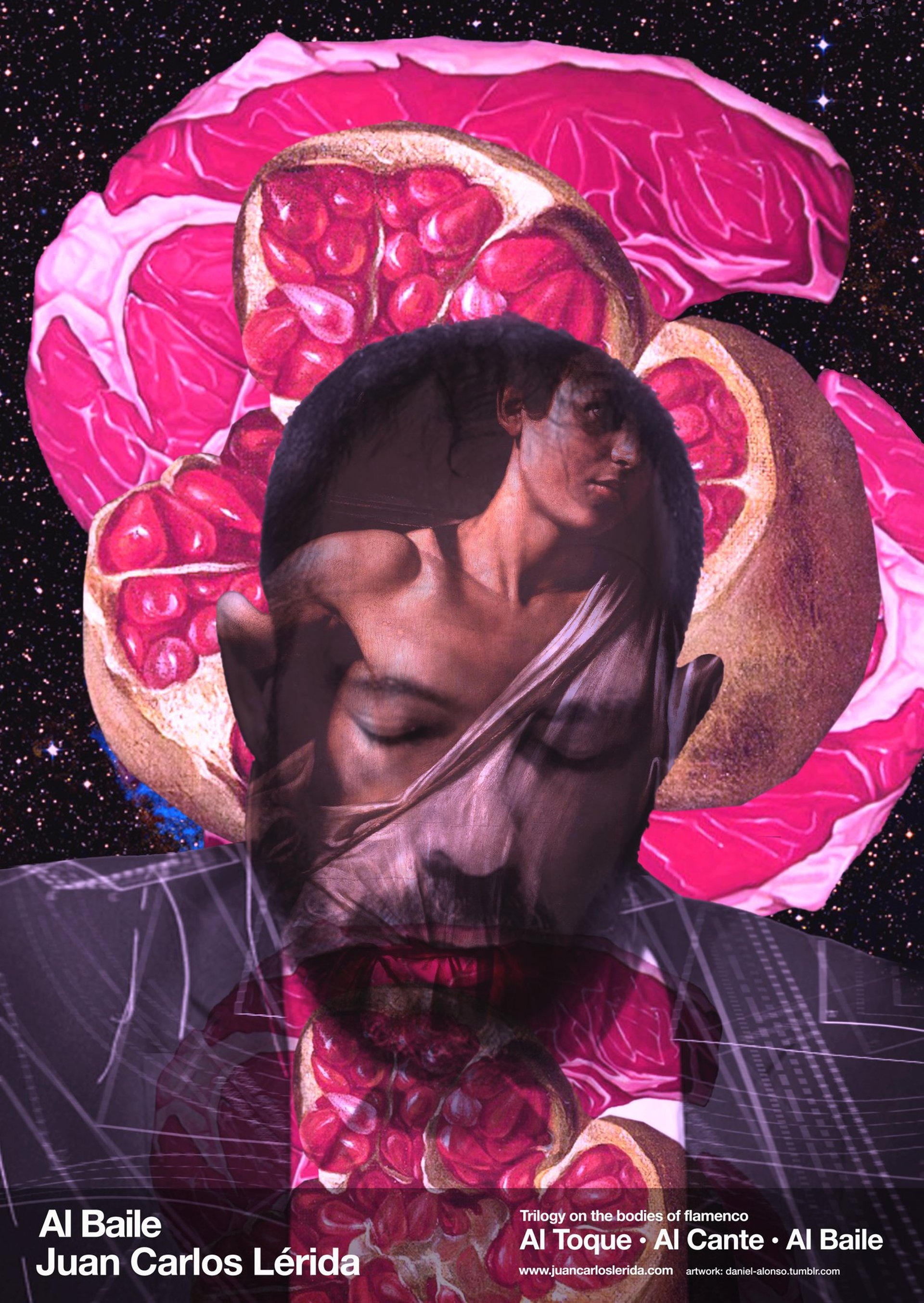
AL BAILE
With Al baile Juan Carlos Lérida completes his trilogy titled Los cuerpos del flamenco, having already explored flamenco as expressed by the guitarists’ and singers’ bodies in Al toque and Al cante respectively.
“In Al baile, Lérida converts his own body, grafted onto other bodies alien to flamenco, into a subject of research, hurrying to find the dance contained in each of his organs as if prospecting for precious metals.”
Fernando LR Parra
Direction and Choreography: Juan Carlos Lérida
Dramaturgy: Roberto Romei.
Interpretation: Juan Carlos Lérida, Gilles Viandier, David Climen
Light Designer: Marc Lleixa
Soundscape: Jordi Collet
Advising movement: Lipi Hernandez.
Set Designer: JC
Desing and Art photo work: www.daniel-alonso.tumblr.com
Photos: Daniel Karsch, Aleix Plana.
Production: Danilo Pioli (Dancebox.es)
Communication: Olga Beca (Telegrama cultural)
Press: Sara Esteller
Premiere: Mercat de les Flors. Barcelona- 21 October 2016
Coproduction: Mercat de Les Fors (Barcelona), Tanzhaus NRW (Dusseldorf), Asoc. Flamenco Empírico.
Supported by: Departament de Cultura de la Generalitat de Catalunya,El Graner (Barcelona),L’Estruch (Sabadell), FUNDarte (Miami)
Thanks to: Nouespiral danza (Girona), Espacio Silvestre (La Muela-Cádiz)
PRESS / REVIEWS
«Fresca, intensa, llena de sensaciones y simbología que atrapaba desde el primer momento.»
«Tetosterona rosa contra los límites»
Danza.es: Juan Carlos Lérida cierra su trilogía con 'Al Baile'
La Vanguardia: Lérida cierra su investigación sobre el cuerpo en el flamenco con "Al baile"
La Información: El bailaor Juan Carlos Lérida le devuelve la espontaneidad "al baile" flamenco
Artez: 'Al Baile' de Juan Carlos Lérida en el Mercat de Les Flors
Europa Press: El bailaor Juan Carlos Lérida le devuelve la espontaneidad "al baile" flamenco
Vilaweb: El ‘bailaor’ Juan Carlos Lérida torna l’espontaneïtat al ball flamenc
Preestreno L´Estruch. Fábrica de Creación. 15-Octubre- 2016
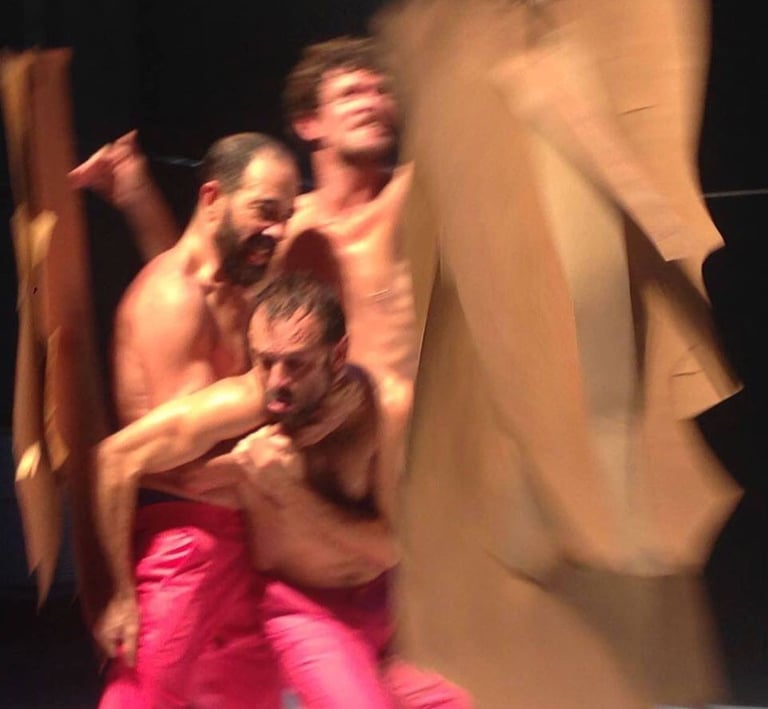

Barbara Raubert para Mercat de les Flors. Blog.
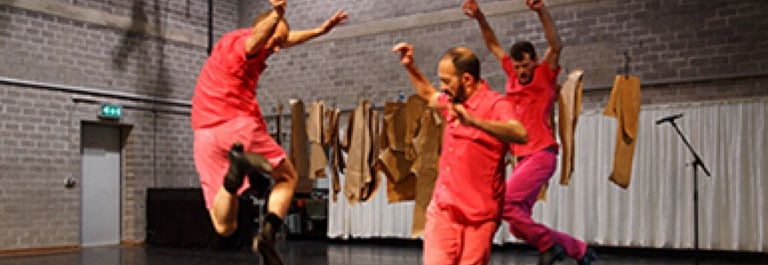

Jordi Sora para Susy Q Magazine. nº 60. 2016
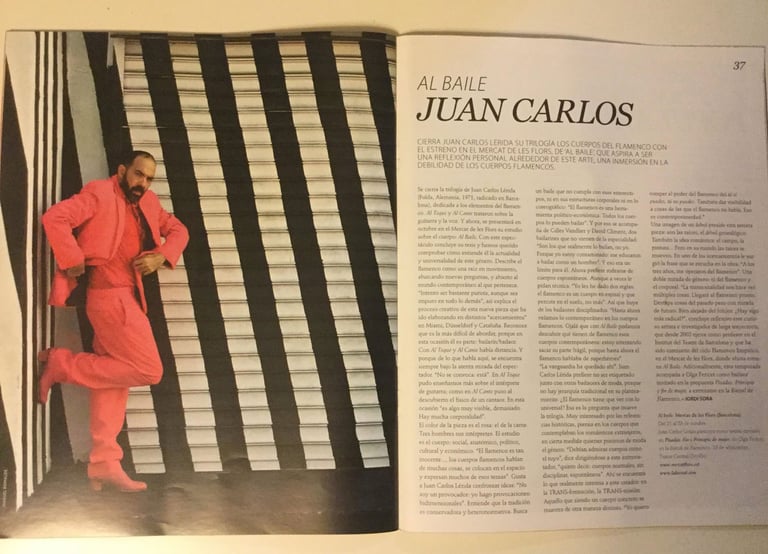

TV3- Televisión Cataluña.
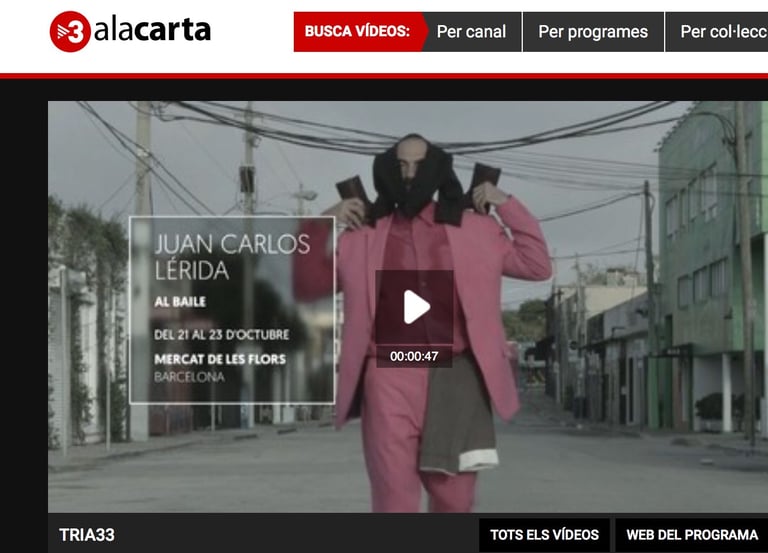

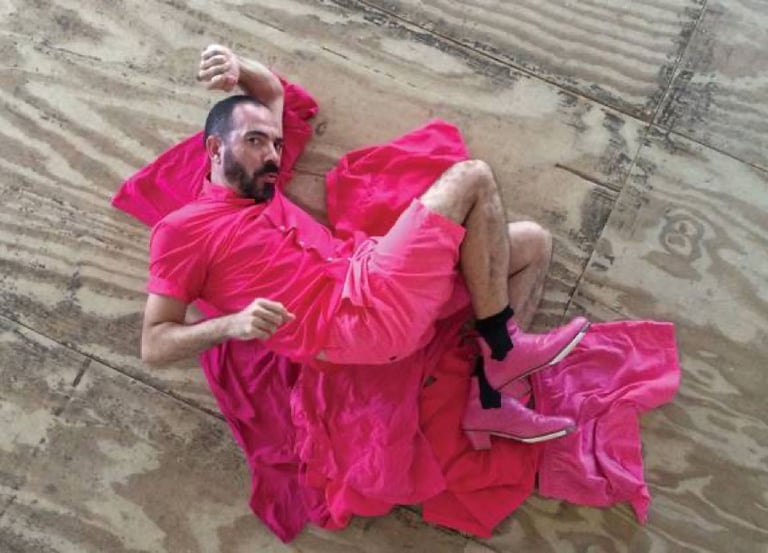

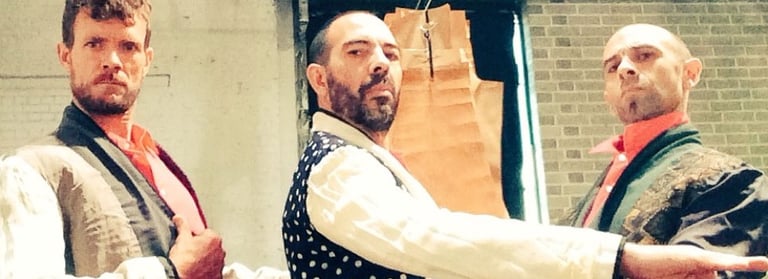

Reseña/ Diario de Terrassa ( Barcelona) por José Antonio Aguado. 26 Octubre 2016
